Manali – Hidimbi, Hidimba and Jogini
21. – 24. September 2023
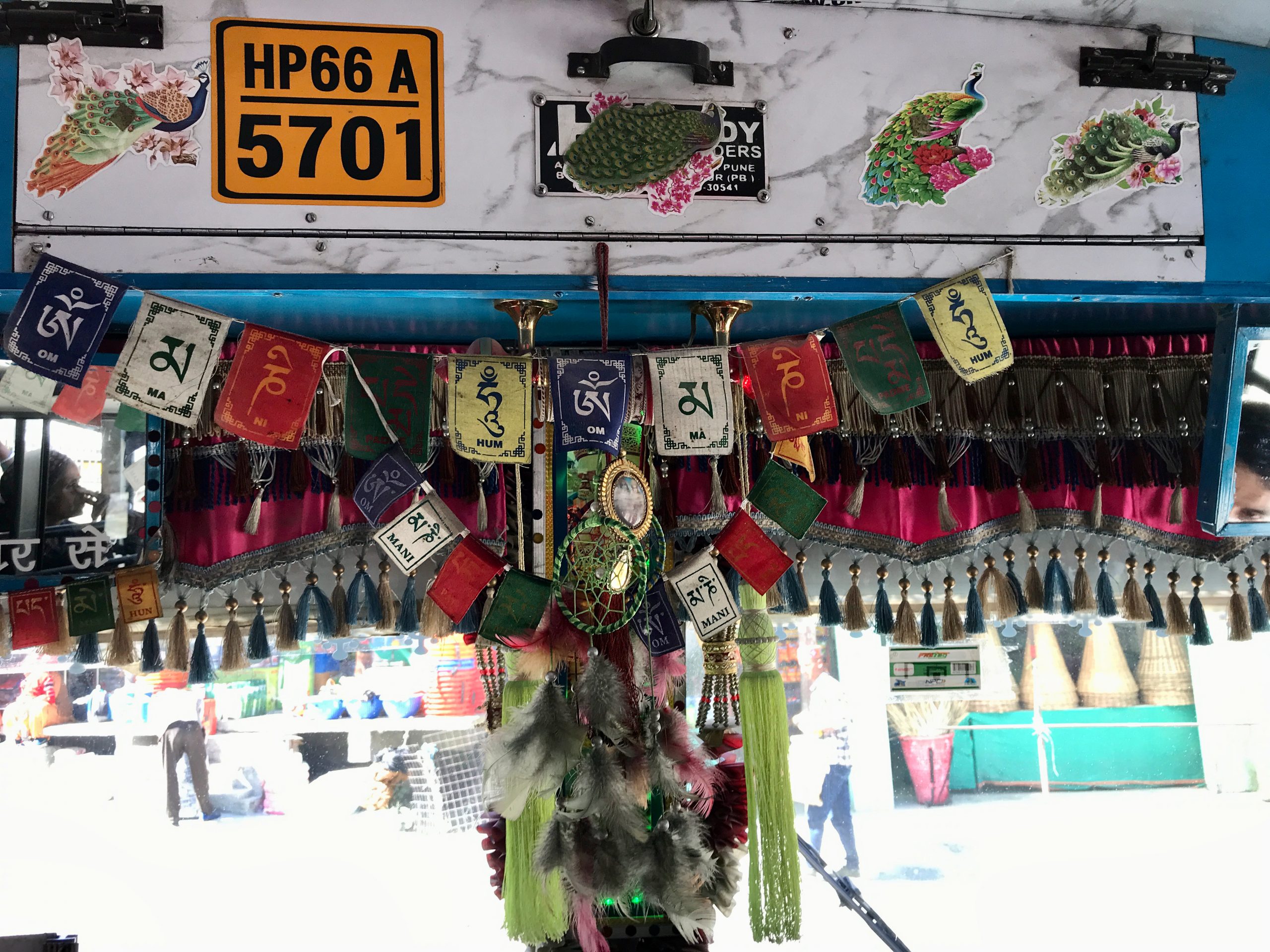
Wir brauchten fast einen ganzen Tag von Bihar nach Manali – zuerst fuhren wir mit dem Auto zum Bushof nach Banjar, stiegen dort in Bus 1, der hübsch dekoriert war und rumpelten zum tunnel nach Aut, wo wir direkt in einen Bus nach Kullu umstiegen (angeleitet vom Schaffner) und dort ließ es sich der Schaffner wieder nicht nehmen, uns direkt in einen Bus nach Manali zu bugsieren. Das klingt reibungslos, aber die Strecke war nicht ohne Hindernisse – alles Straßenschäden durch die vorherigen Unwetter. So dauerte es dann alles recht lange. Es ist schon verrückt, was hier jährlich passiert, wenn die Berge sich in Bewegung setzen und die Flüsse anschwellen und Straßen und Häuser wegreißen. Neu ist es aber nicht wirklich, schon 1995 kam ich mal mit einem letzten Bus nach Manali und saß dort fest: alles drumherum an Straße war weg. Nach 3 Tagen machte ich mich damals auf den Weg und krabbelte über 11 Erdrutsche nach Kullu (40 km) mit immer kleinen Fahrtservices dazwischen. Ich habe wenige Bilder gemacht und machen können – hier sind die paar:
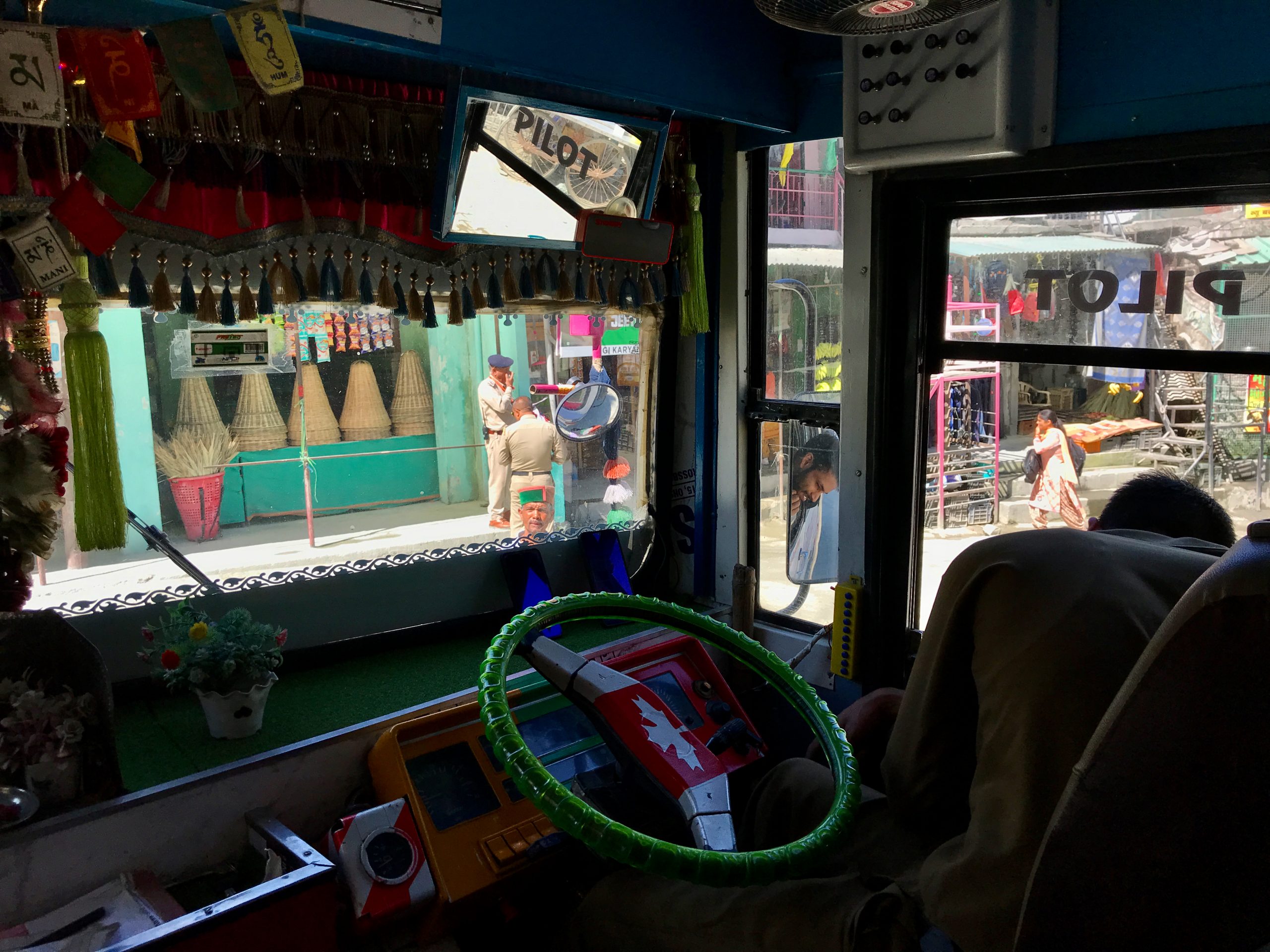 1
1
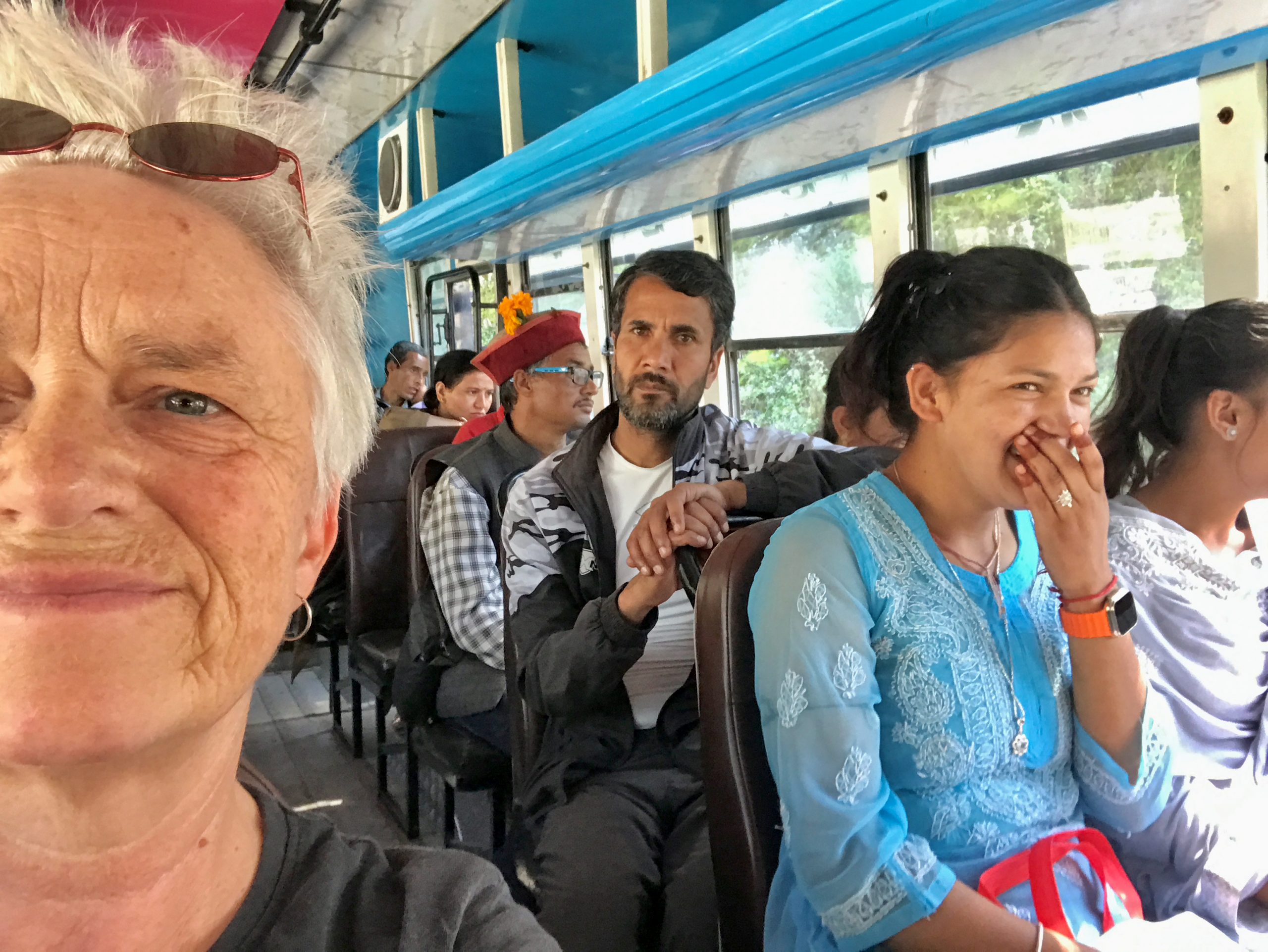 2
2
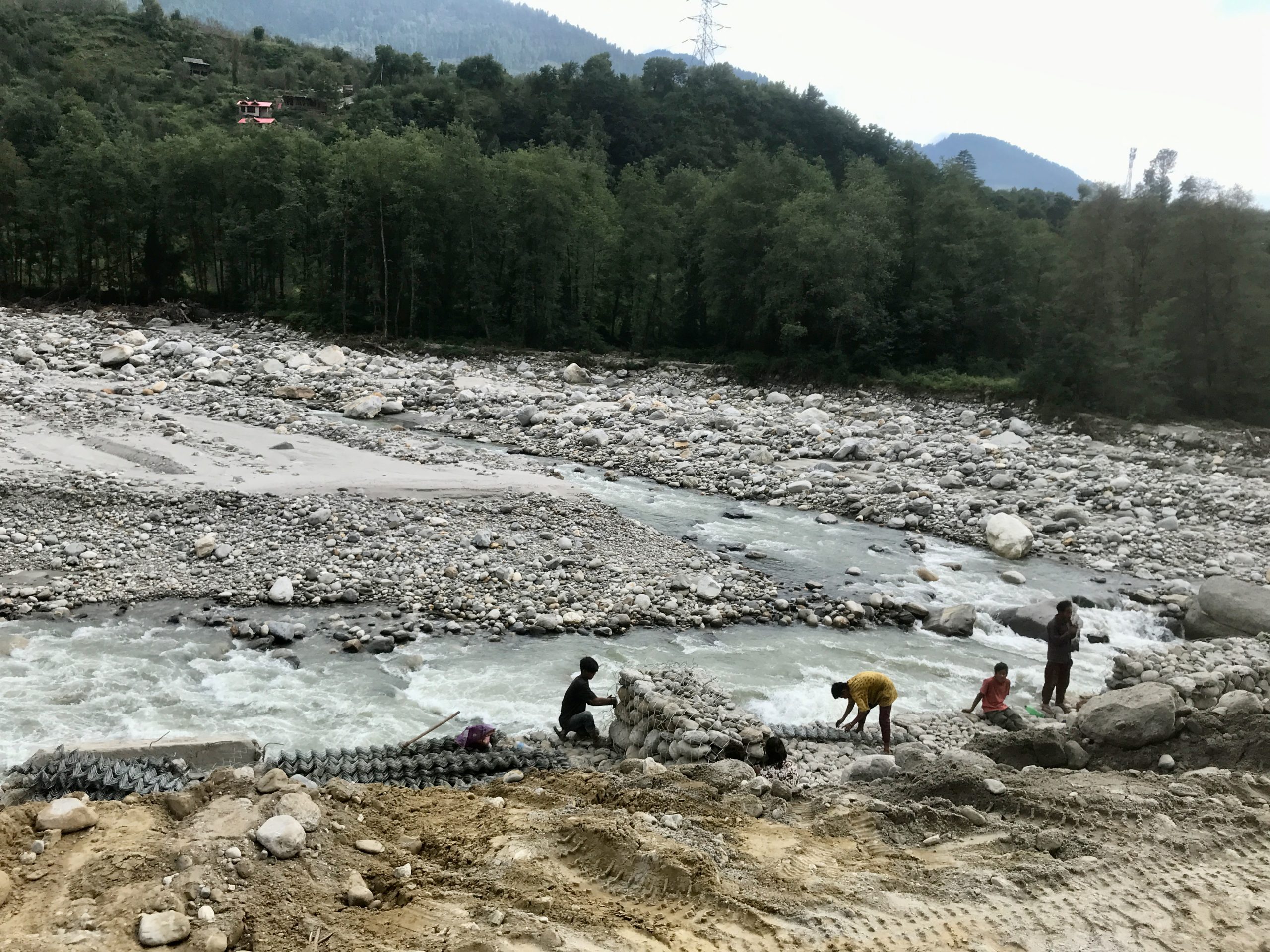 3
3
We had usually chosen the accommodation in booking.com and booked through it – no more searching around locally. They had all been lucky deals – the one in Manali was not. In fact, it was pretty awful and so we gave it up (how this is handled with cancellation fees is not yet clear to me, but it was definitely worth it to us) and went searching as we did before internet times. And that was successful! And how! For just over 10 euros per person, we got a two-storey palace room!
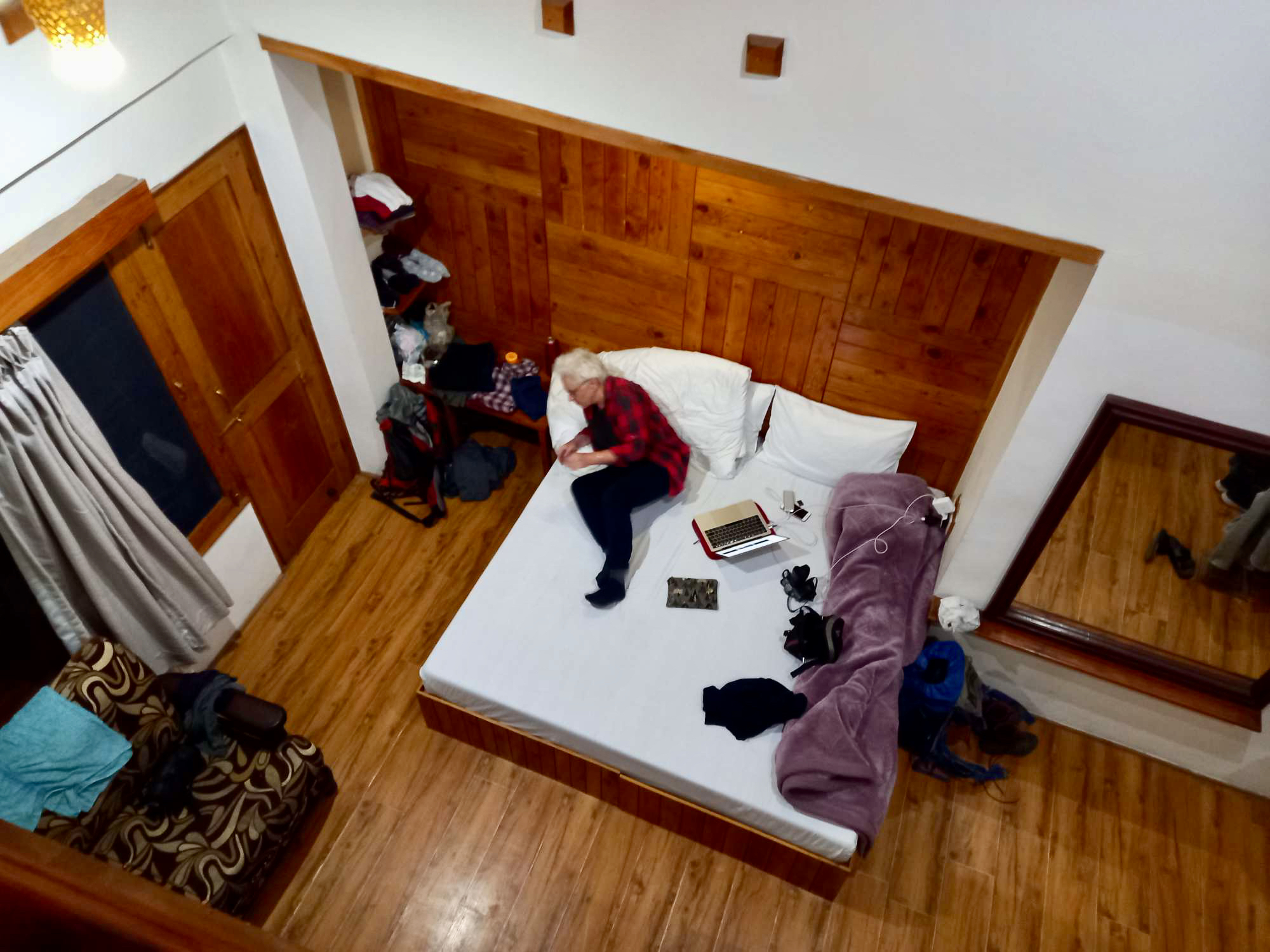 view to bed
view to bed
I was in Manali for the first time in 1992 and then I don’t know how many more times. It’s a comfortable place with a lot of tourism, unattractive on the one hand, but on the other hand you can still enjoy yourself here and discover a lot of interesting things. 2015 was probably the last time I was here and hardly anything has changed since then. Our accommodation is in Old Manali, which always fascinates me with this mixture of quasi untouched village life, where people collect their harvest (apples, corn, hay), take care of their animals and sit around and on the other hand all the restaurants, fashion shops, tattoo studios, guest houses, German Bakeries, potheads etc. what the modern hippie tourist (many from Israel) needs to hang around. We were greeted happily by our host because we were the age of his beloved grandma, and that’s how I felt by now: completely outgrown this whole scene, which I never belonged to. But it was fun to watch it with Eva
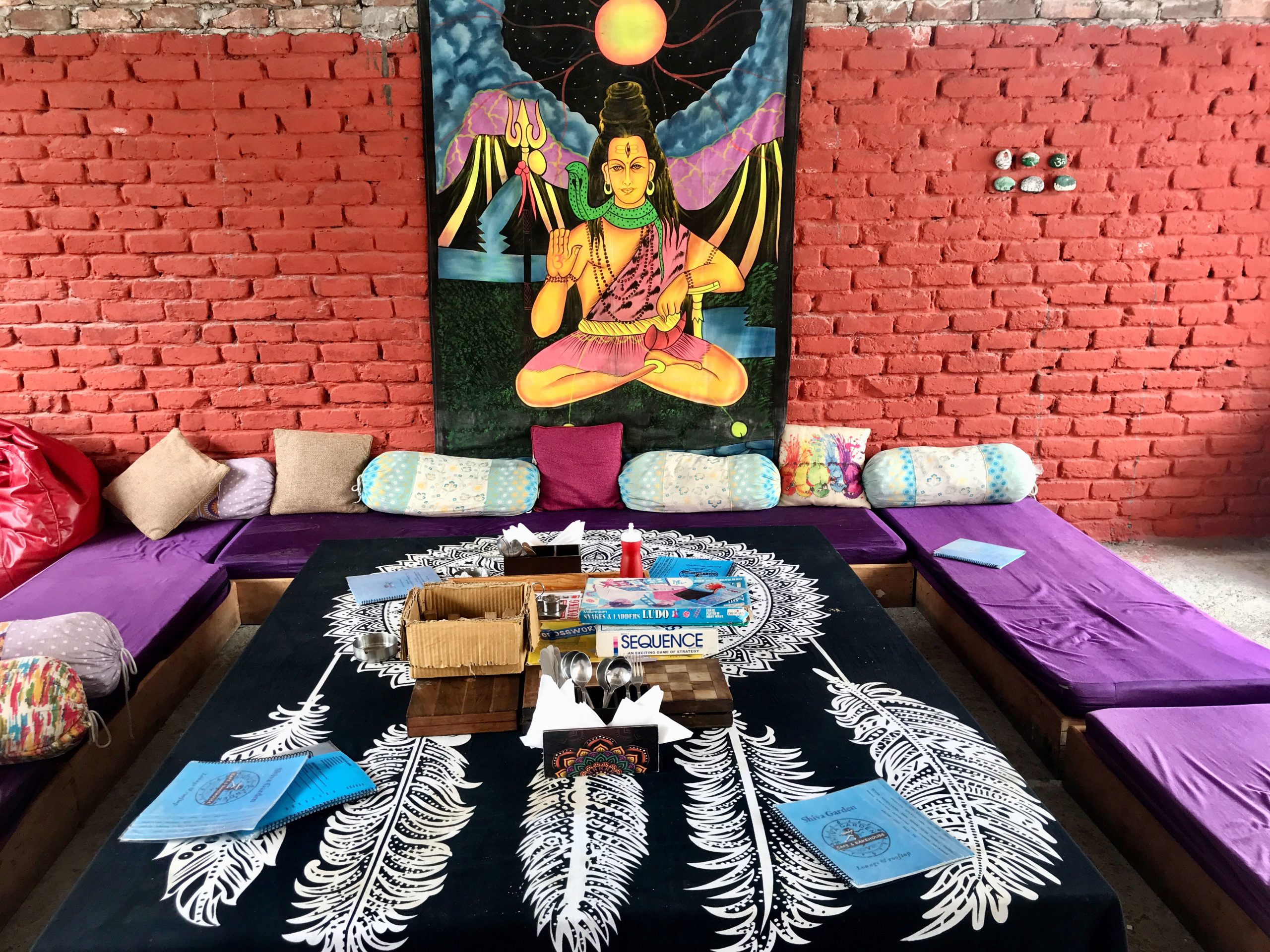 Shiva restaurant
Shiva restaurant
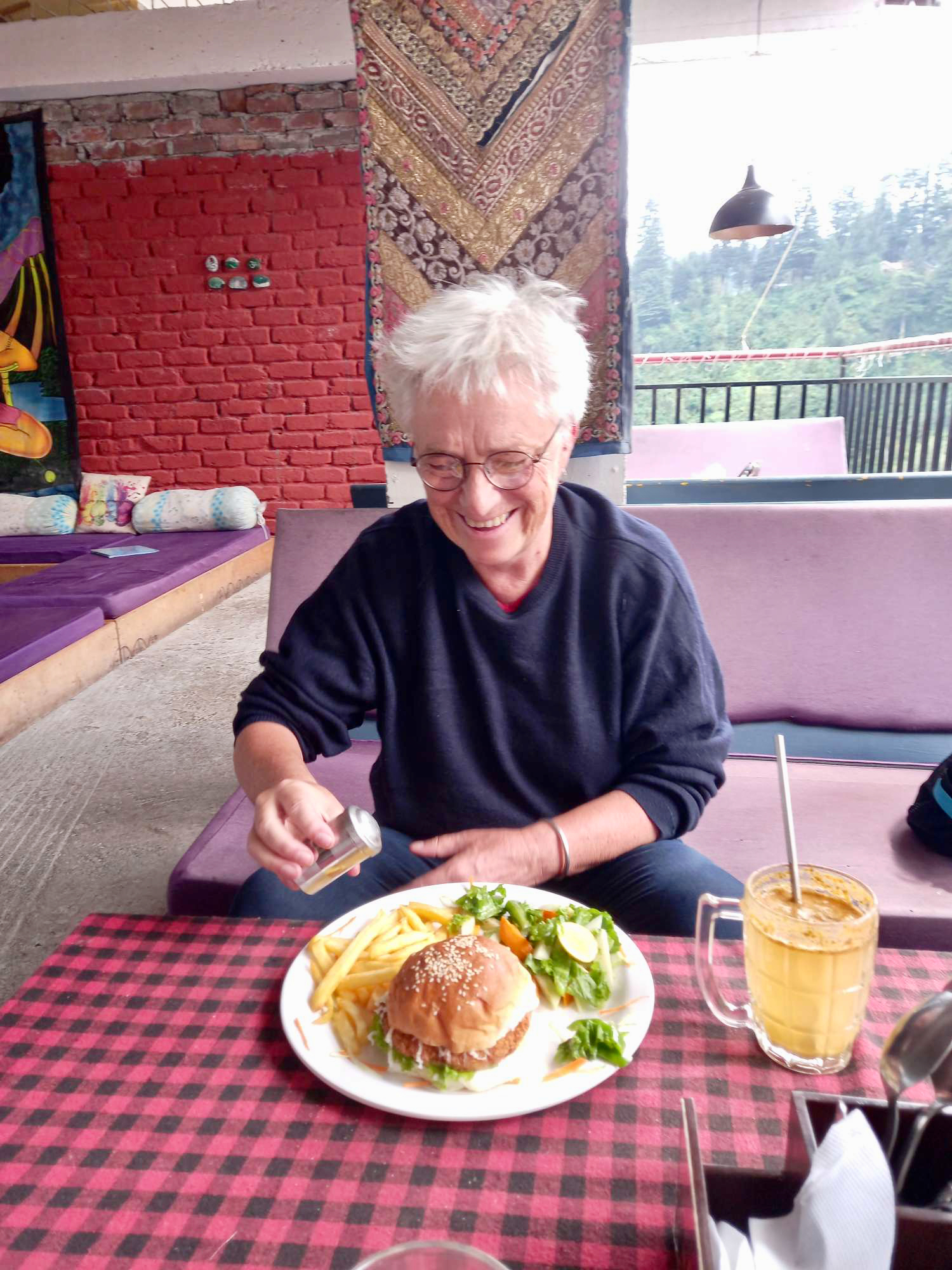 yummy food
yummy food
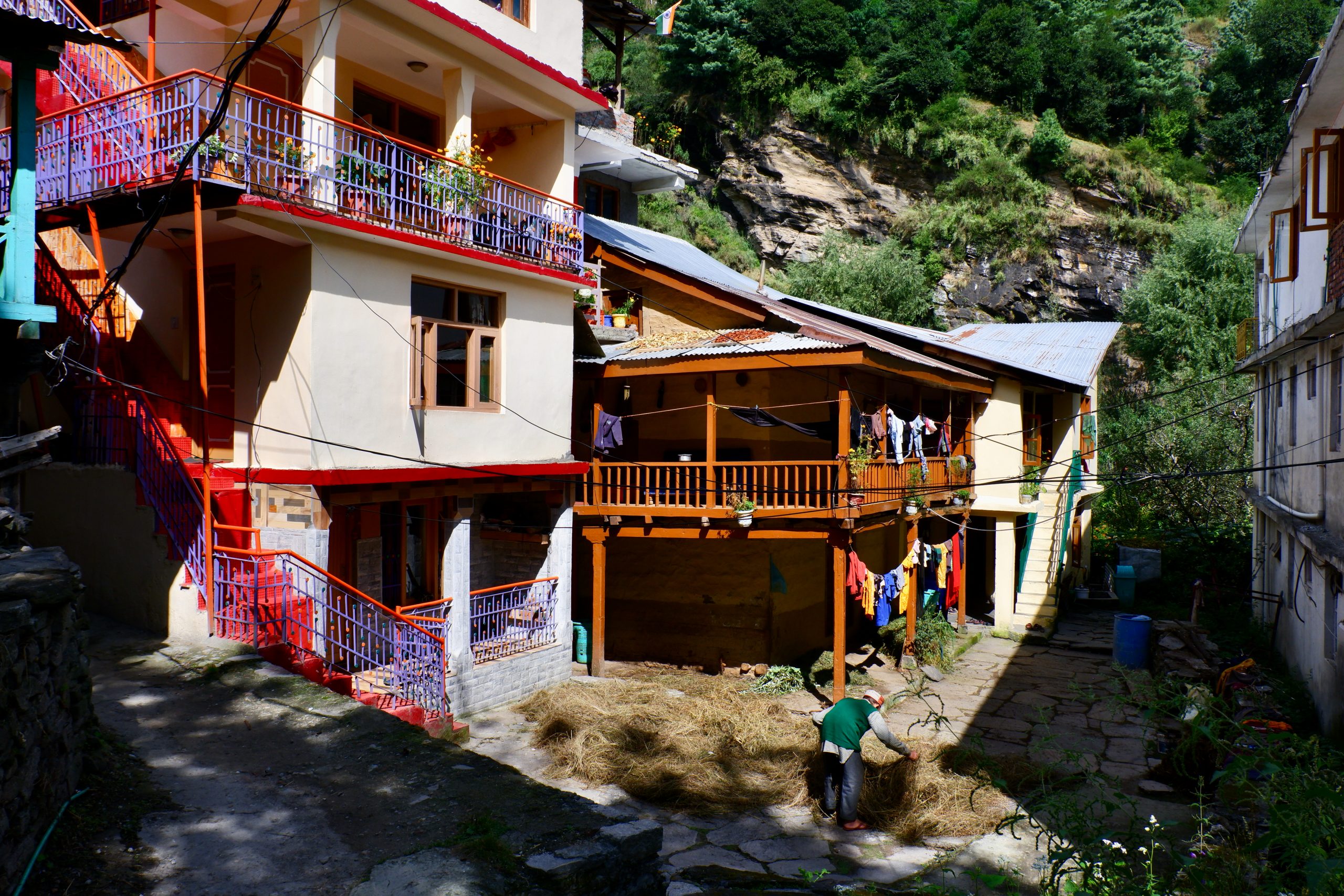 drying hay
drying hay
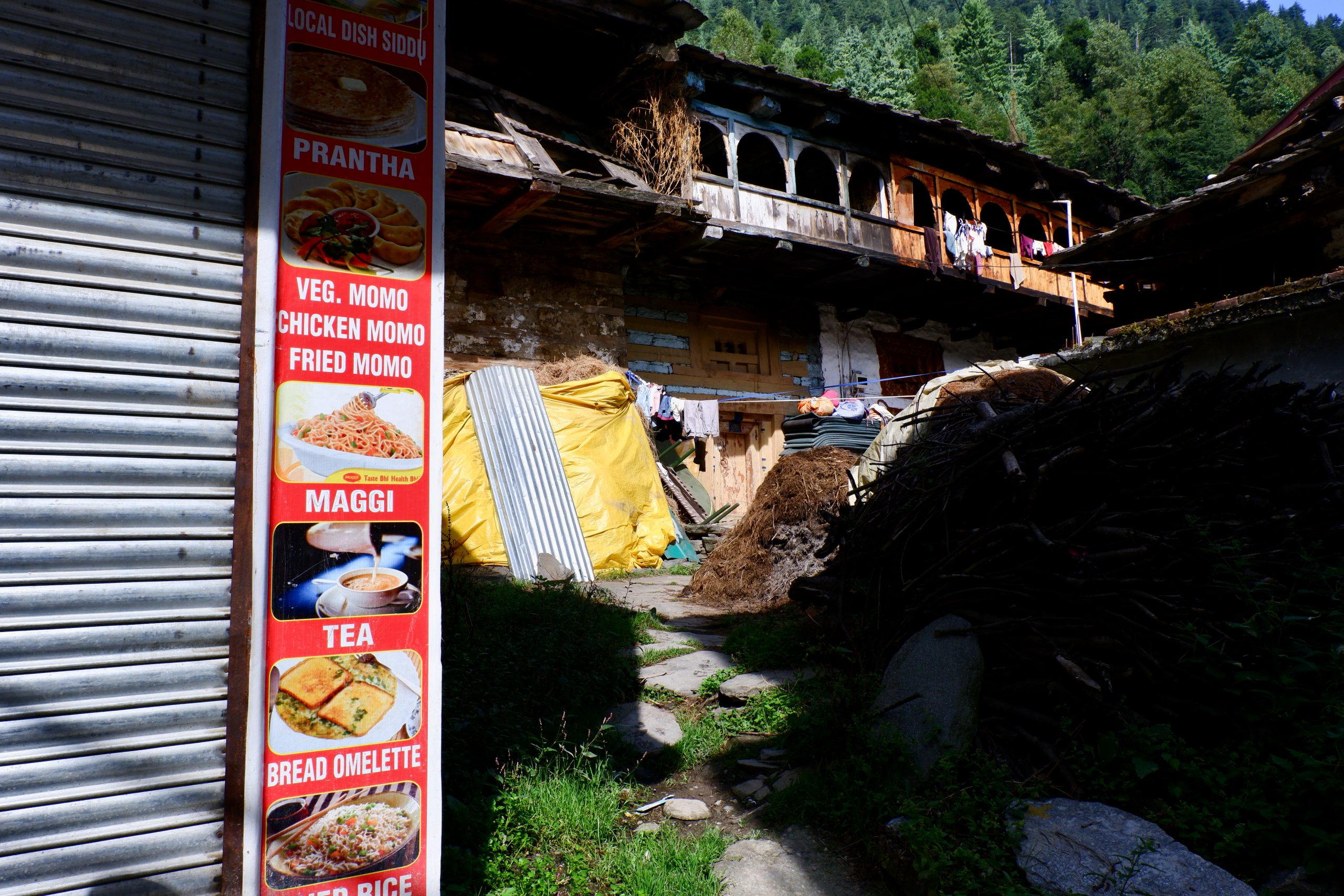 old house
old house
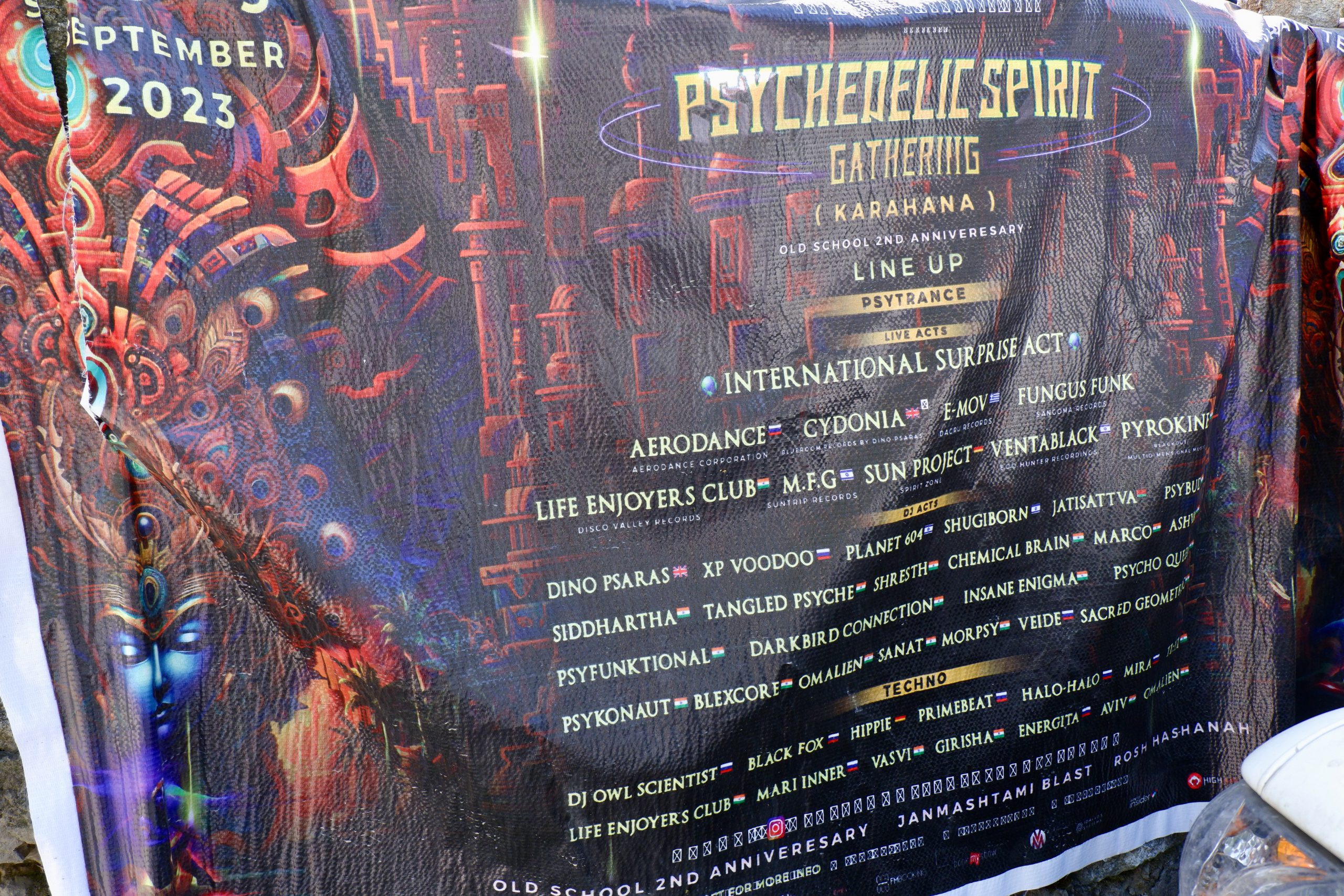 old poster (beginning of September)
old poster (beginning of September)
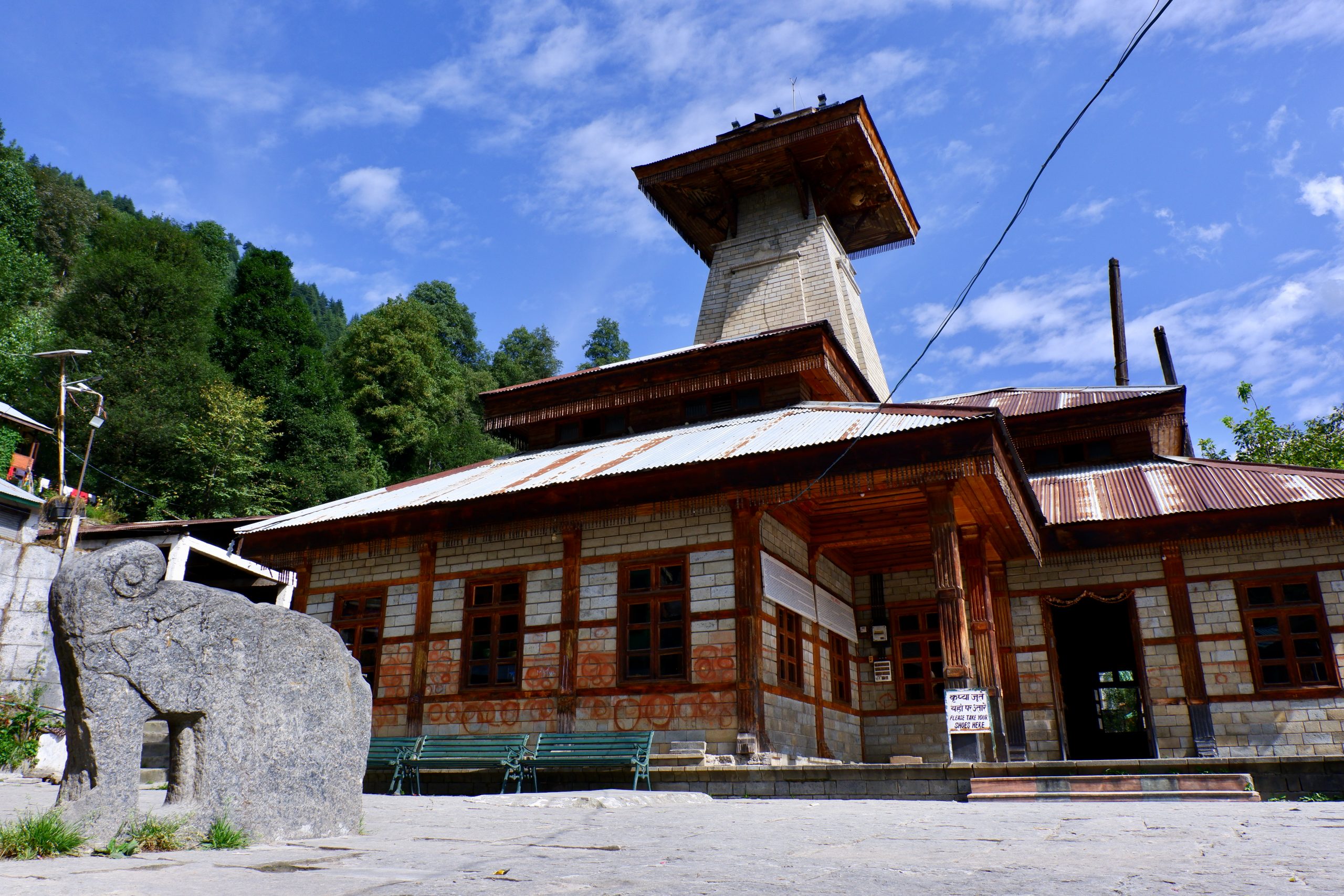 Manu-Temple
Manu-Temple
By the way, there is an absolute lull in tourists here. According to a shopkeeper, only about 10% of the usual guests are here – which is mainly due to the damages. Normally Manali is bursting at the seams, but now it is quite bearable. The absolute larger number is Indian travellers, for whom Manali boomed after Srinagar/Kashmir became too many back then.
I took Eva to some places I already knew, e.g. the big sight here, the Hadimba temple. It is in the middle of the forest and very beautiful with many carvings. But even more beautiful is the story, which is also from the Mahabharata (more stories in my Uttarakhand blog):
The Pandavas wandered around and took a rest in a dark forest. Everyone fell asleep except Bhima, who kept watch. In this very forest lived a demon (Rakshasa) Hidimba and his sister Hidimbi. Hidimba was able to sniff the Pandavas from afar and, as usual, told his sister to set a trap for them. His main target was Bhima, whom he wanted to eat. Bhima was brimming with good looks and when Hidimbi approached him, she could not help but fall in love. She transformed into a beautiful woman, walked towards him and expressed her desire to marry him. While doing so, she also told him the background, namely that she was a demoness and that her brother wanted to eat Bhima. Bhima then confronted Hidimba and they fought a duel. Bhima won and killed Hidimba and wanted to marry Hidimbi and be with her until a child was born. This happened the very next year. They named the child Ghatotkacha, which means “pot” because he looked like one. The child grew into a great warrior and became an important figure in the Mahabharata.
One could go on forever telling stories of these people – but I think that tends to happen only from time to time in this blog.
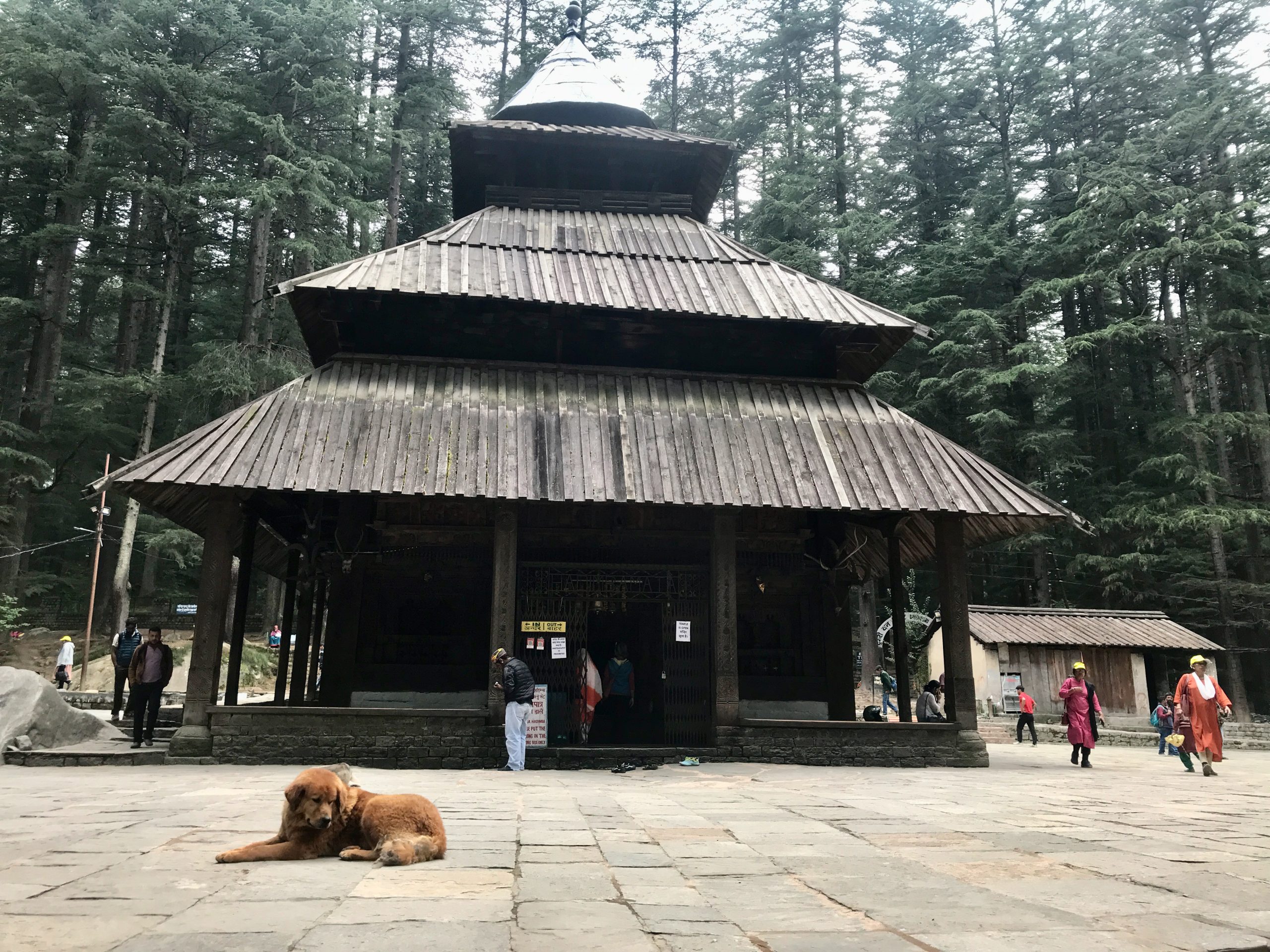 1
1
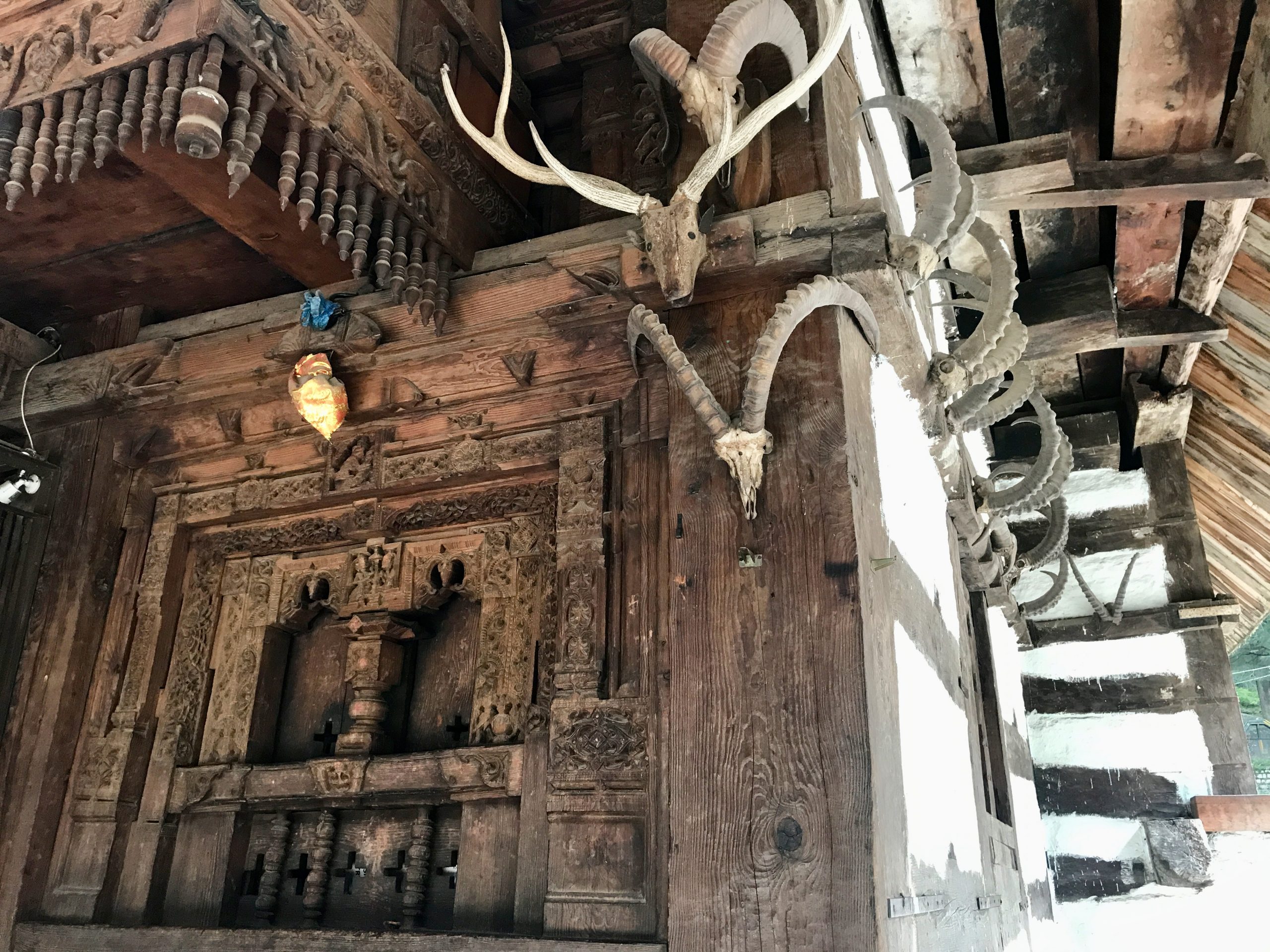 2
2
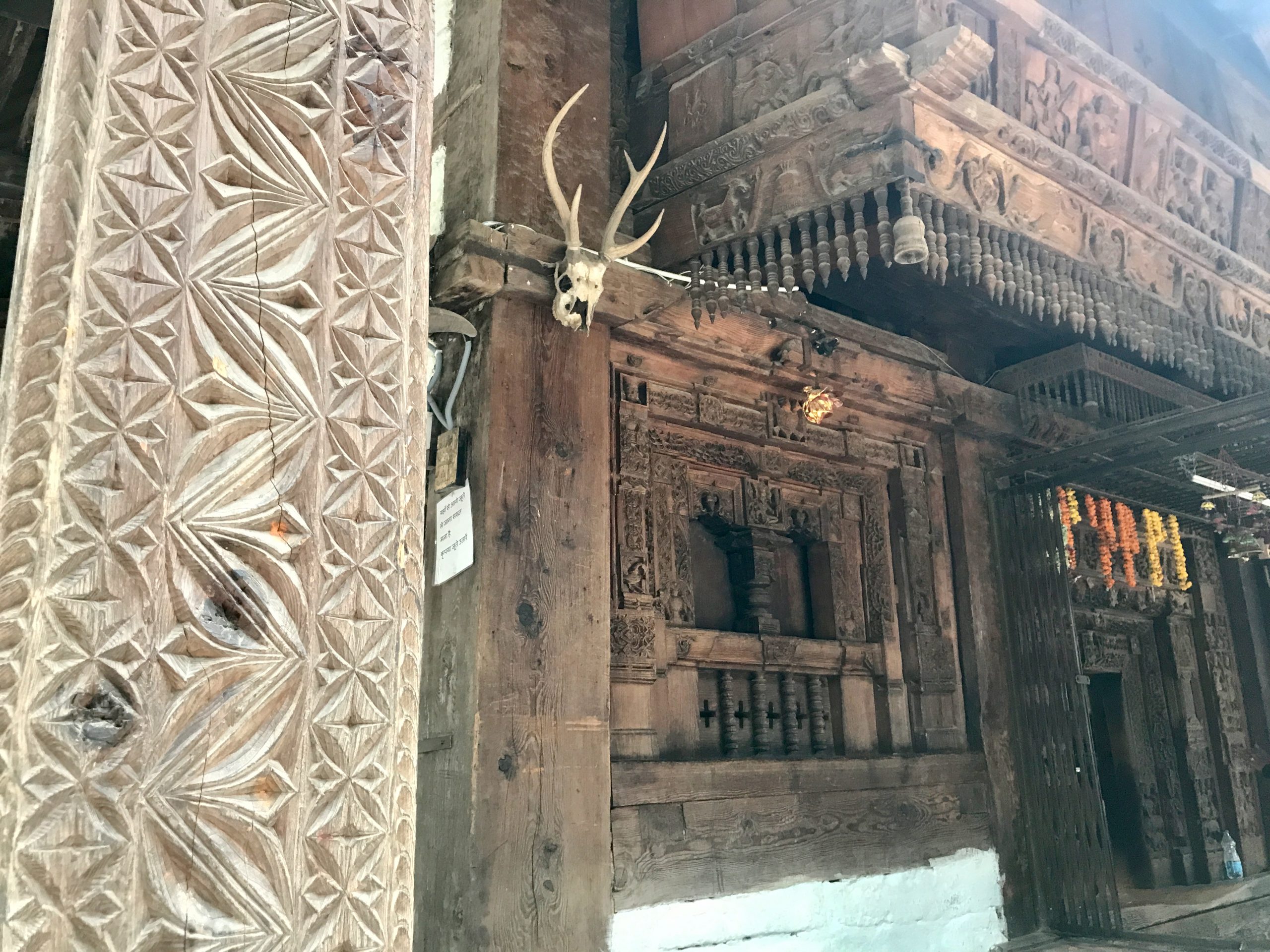 3
3
And then it was finally time again: I went to the hairdresser! Always a very inexpensive pleasure! For about 4 euros I got a perfect haircut and a great head massage. Eva always had to laugh at how absolutely self-confident the hairdresser was in deciding how to cut my hair – and so I have a slightly different hairstyle than before. He didn’t speak English anyway, but he cut enthusiastically. I’m not particularly hair-fixated anyway and was highly satisfied with his result.
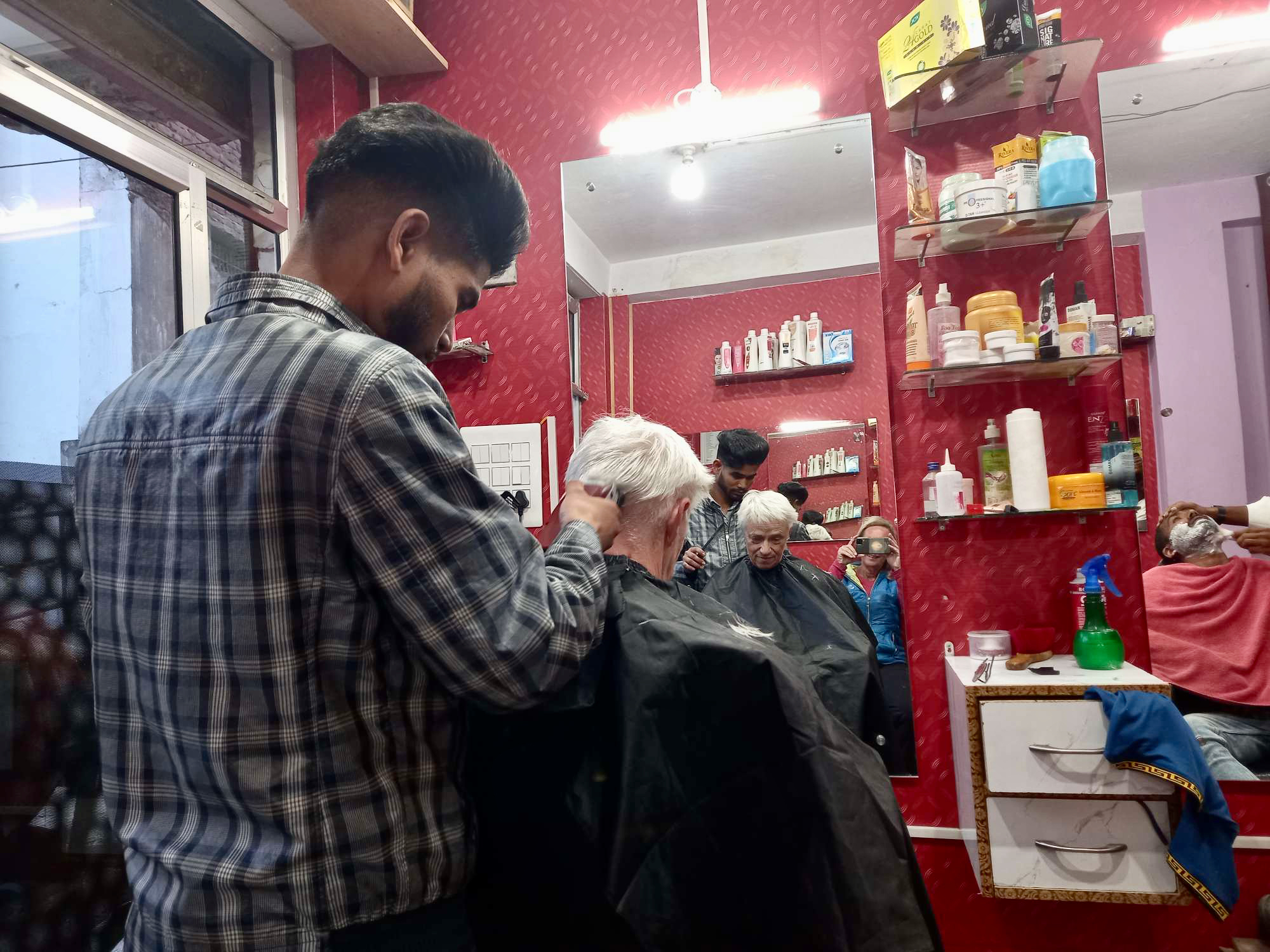 hairdresser
hairdresser
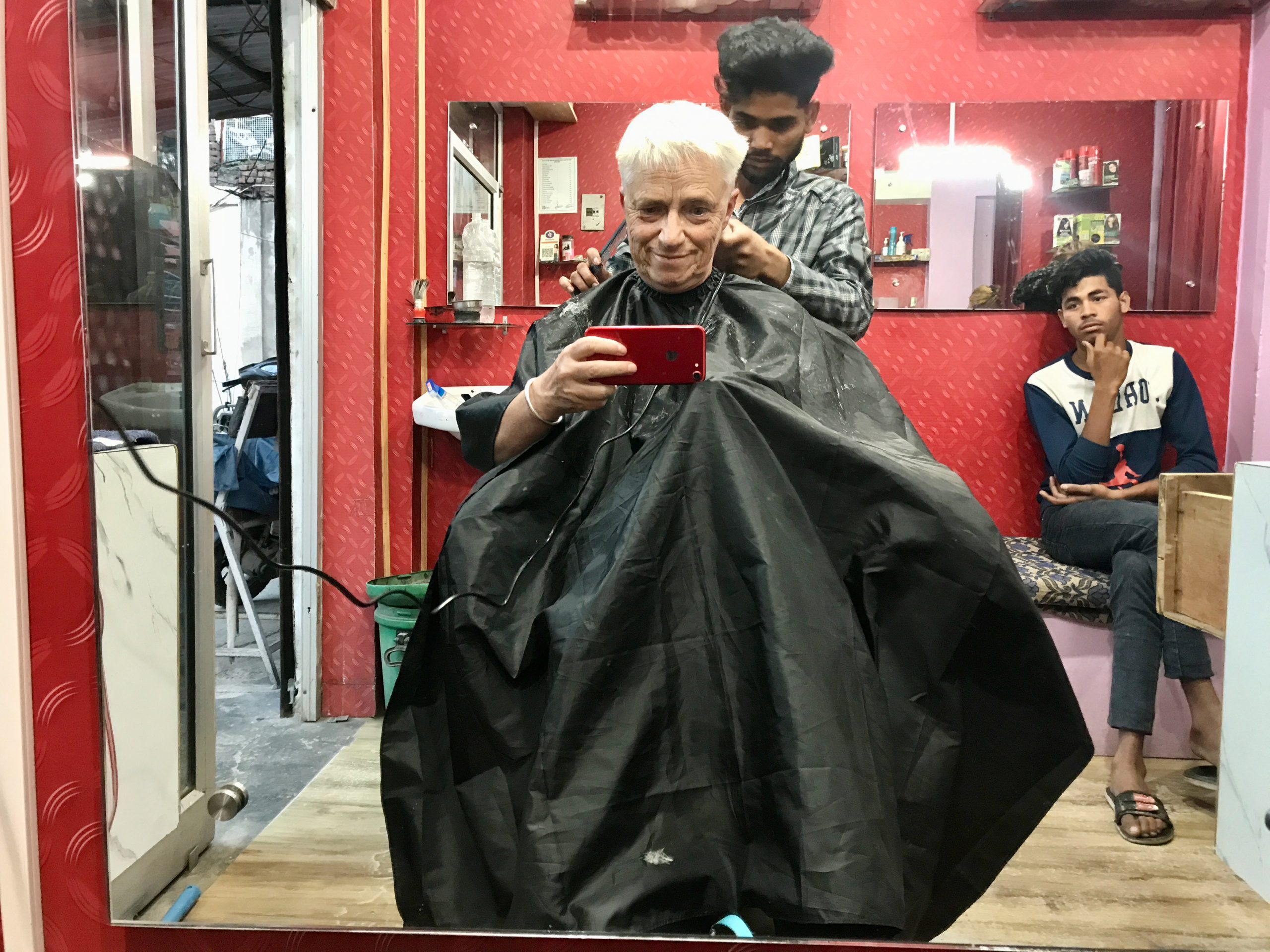 from front
from front
The next day we planned a small excursion: the Jogini Falls behind Vashisht. For this, we first go up on the left side of the river. And we imagined what it looks like when the river takes up the entire width, nibbles at the edges and swirls the huge boulders around.
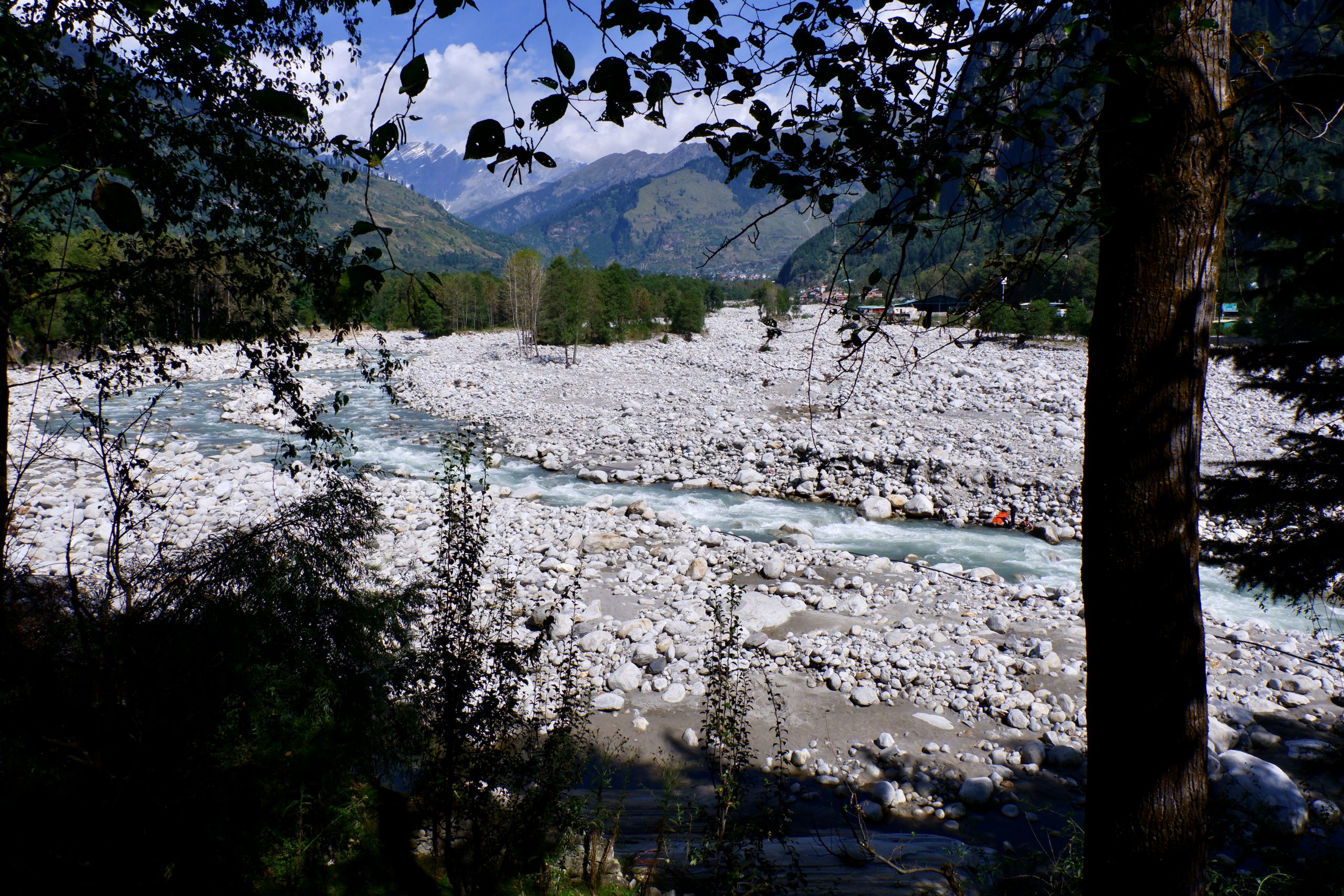 Beas River
Beas River
Maps.me had shown a bridge over the river and it was indeed there. And funnily enough, so was a huge horde of young Indians with big backpacks. They are taking part in a mountaineering guiding course and had spent the night at Brighu Lake. They were from all over India, the women were in the minority, but I spoke to some from Himachal, Assam and Rajasthan. It was all great to look at. Also, some had big bags with them in which they had collected rubbish.
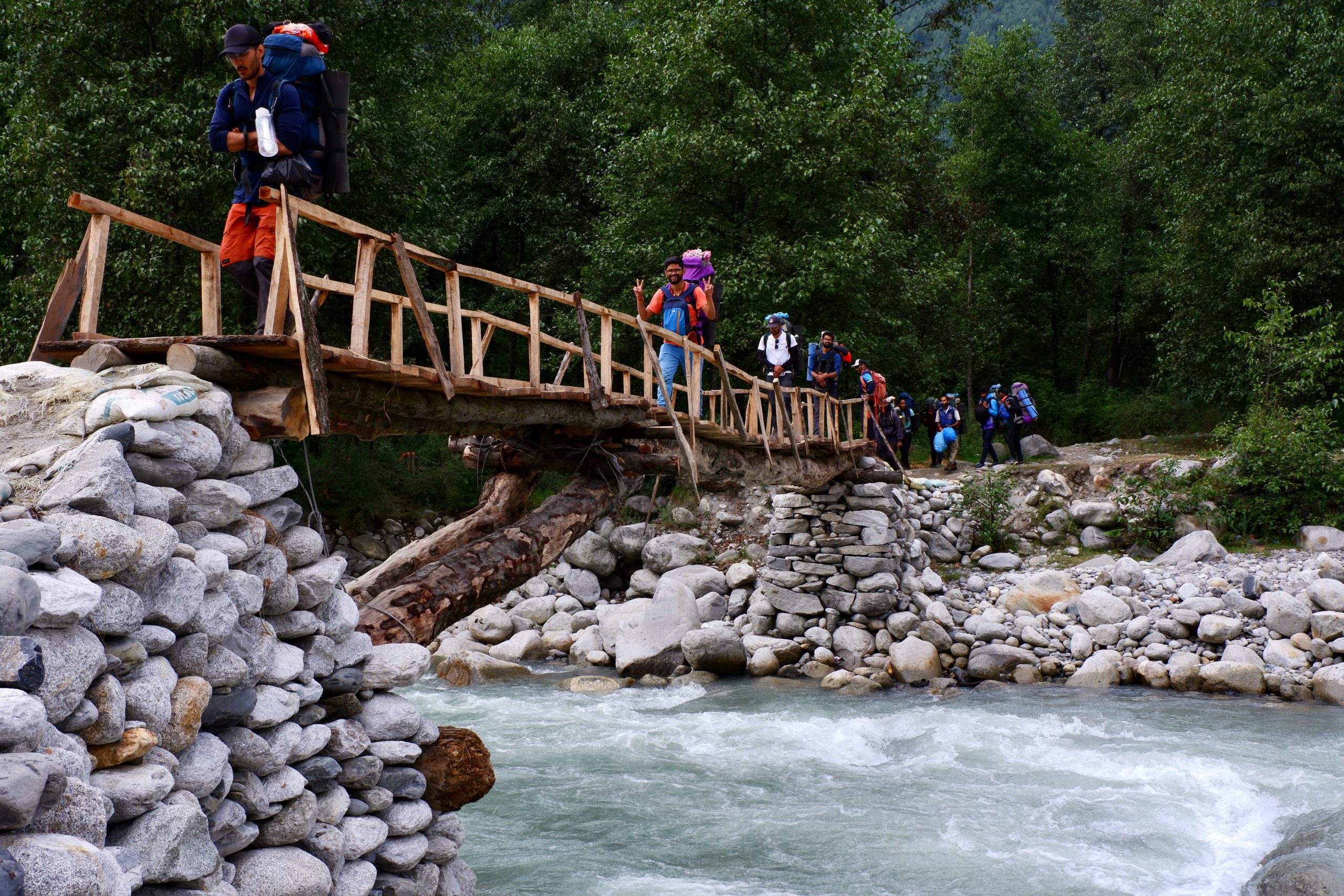 1
1
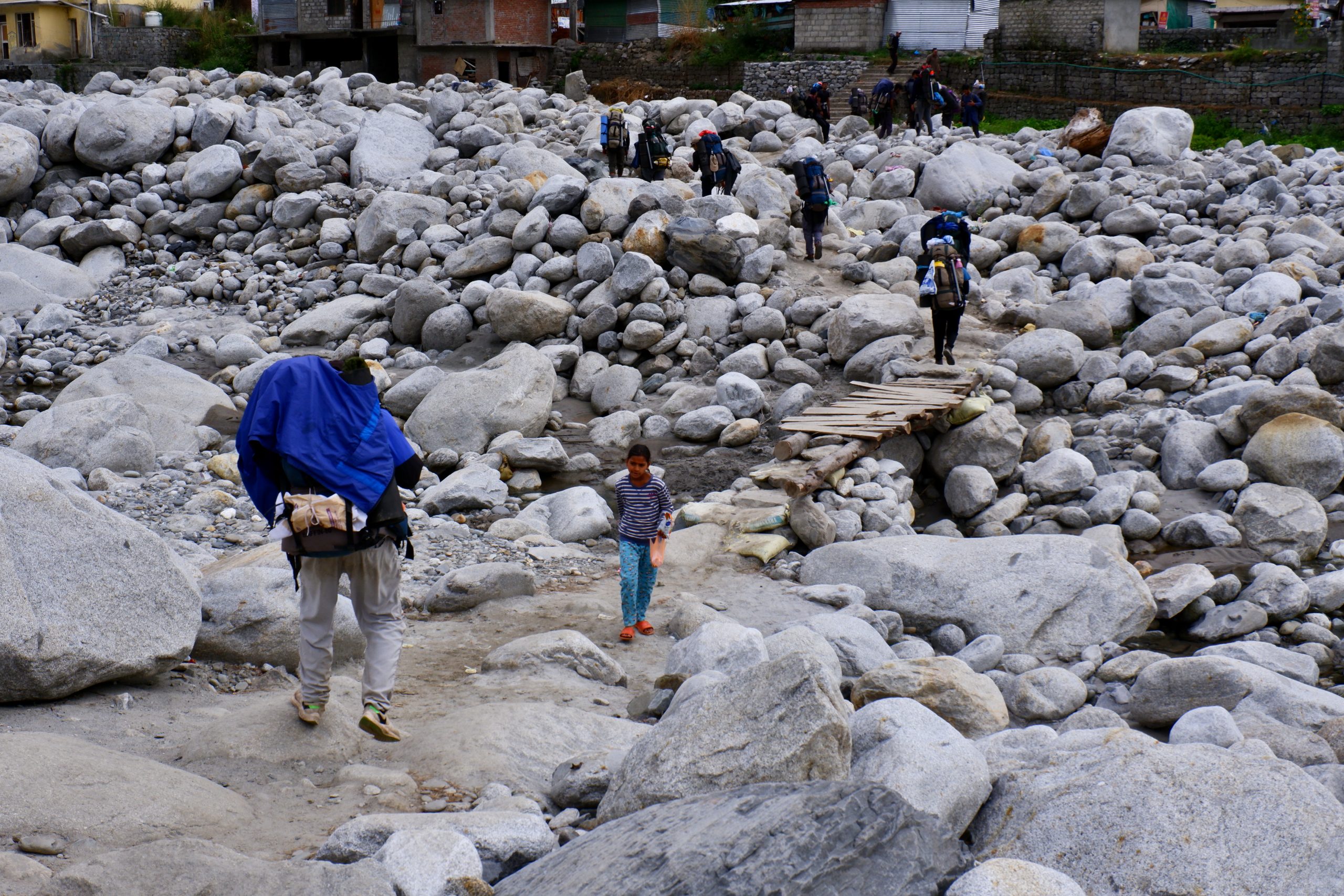 2
2
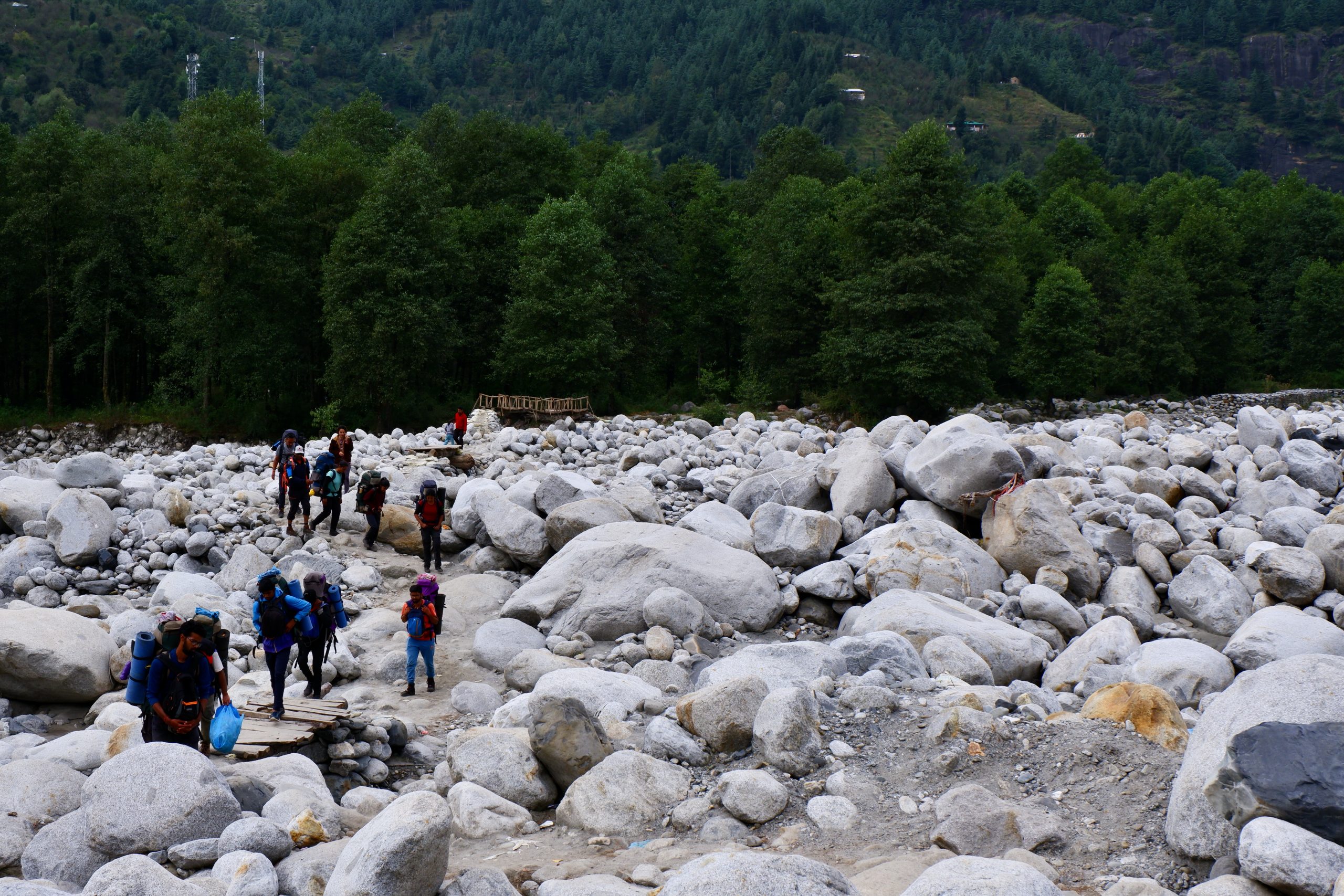 3
3
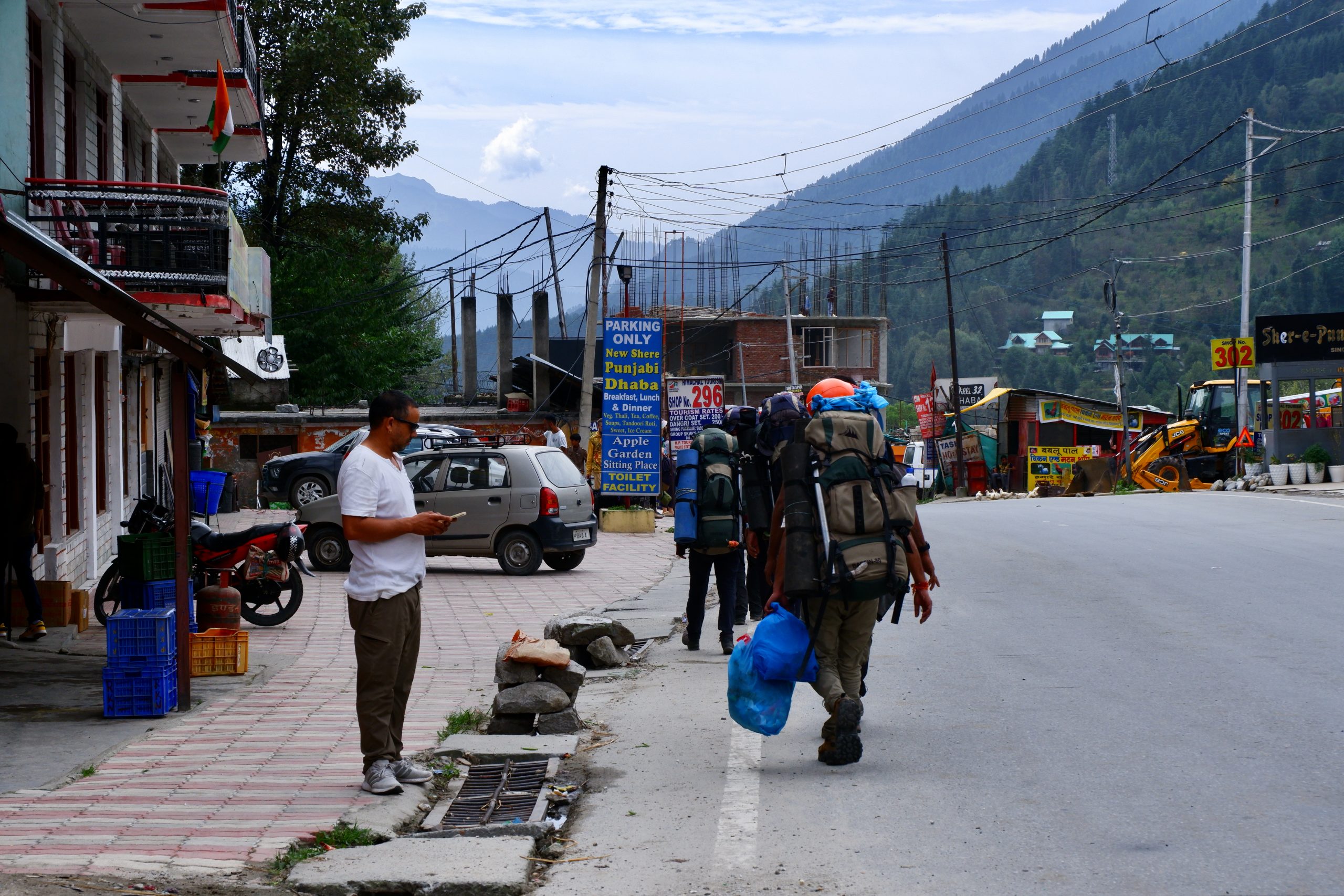 4
4
The Jogini waterfall jumps down quite impressively high cliffs and seems to be a popular destination. Various people cavorted at its feet. They were all too much for Eva and I don’t like waterfalls anyway, mainly because of the noise. So we decided not to stay there any longer, even though we could have climbed even higher. I mainly wanted to see how it was suitable as a hike for my travel clients. We went up a somewhat stupid way (the shortest), but if you start walking from Vashisht and then slowly walk down further up to the road it is quite a nice tour. Just maybe a bit crowded in the season.
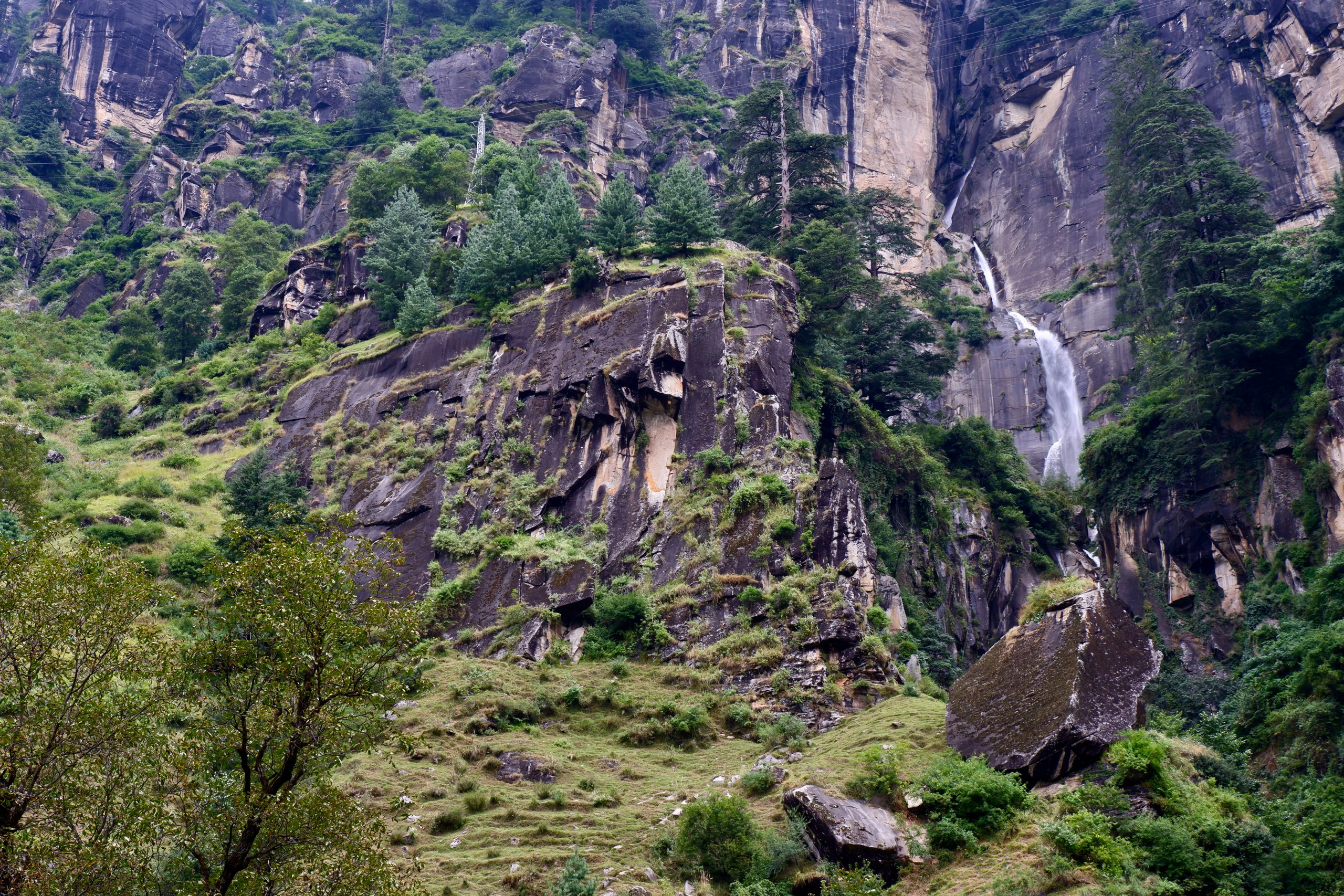 1
1
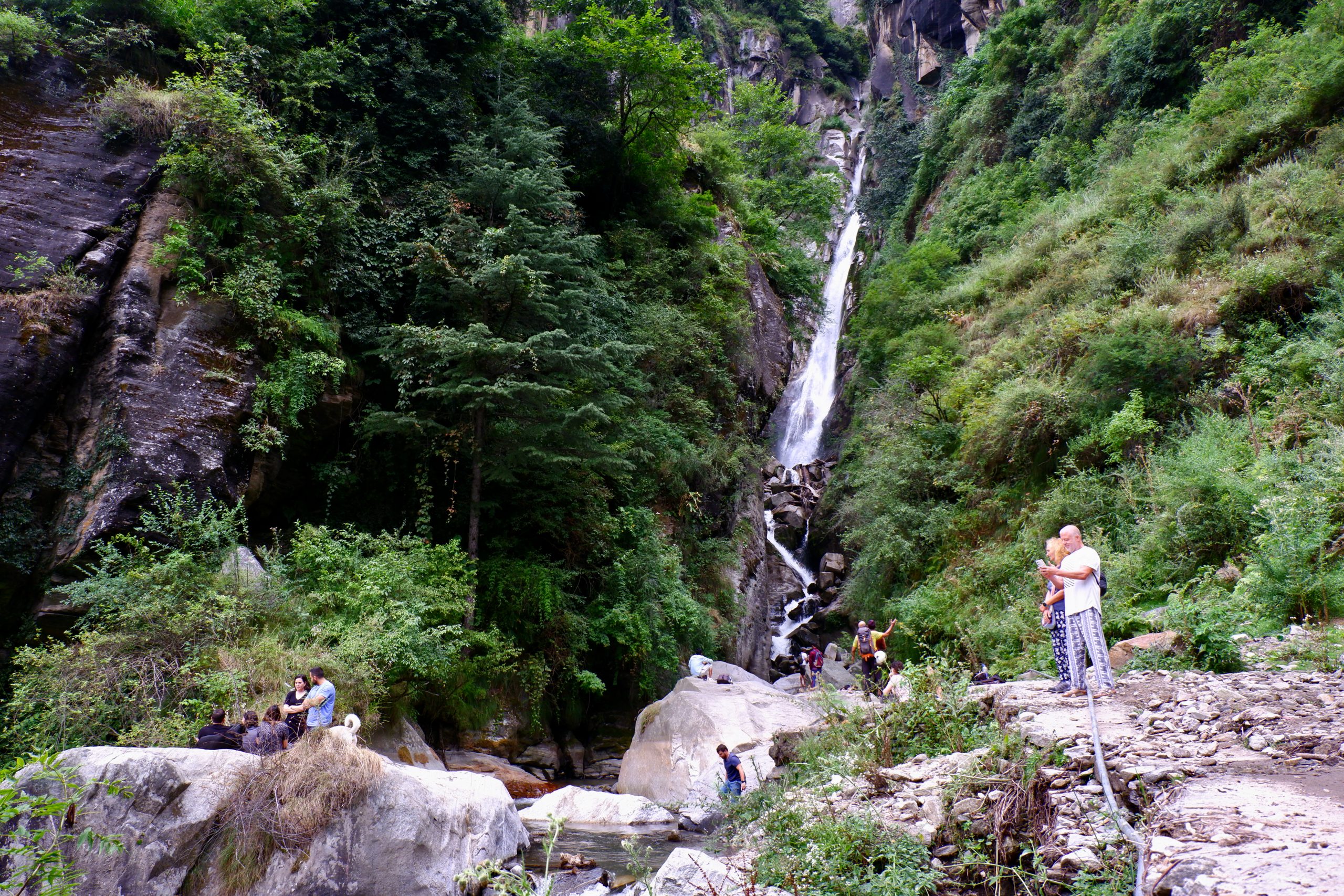 2
2
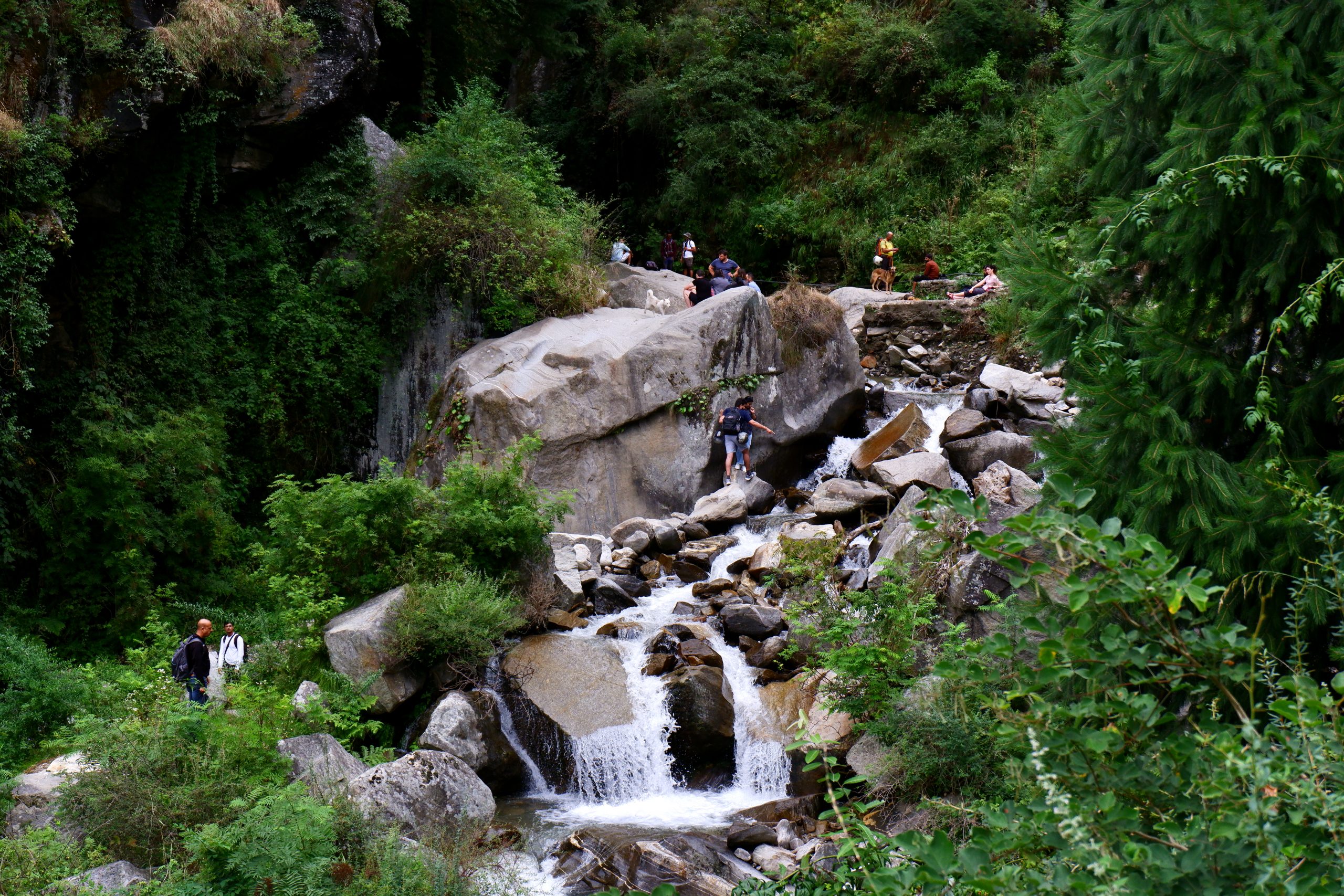 3
3
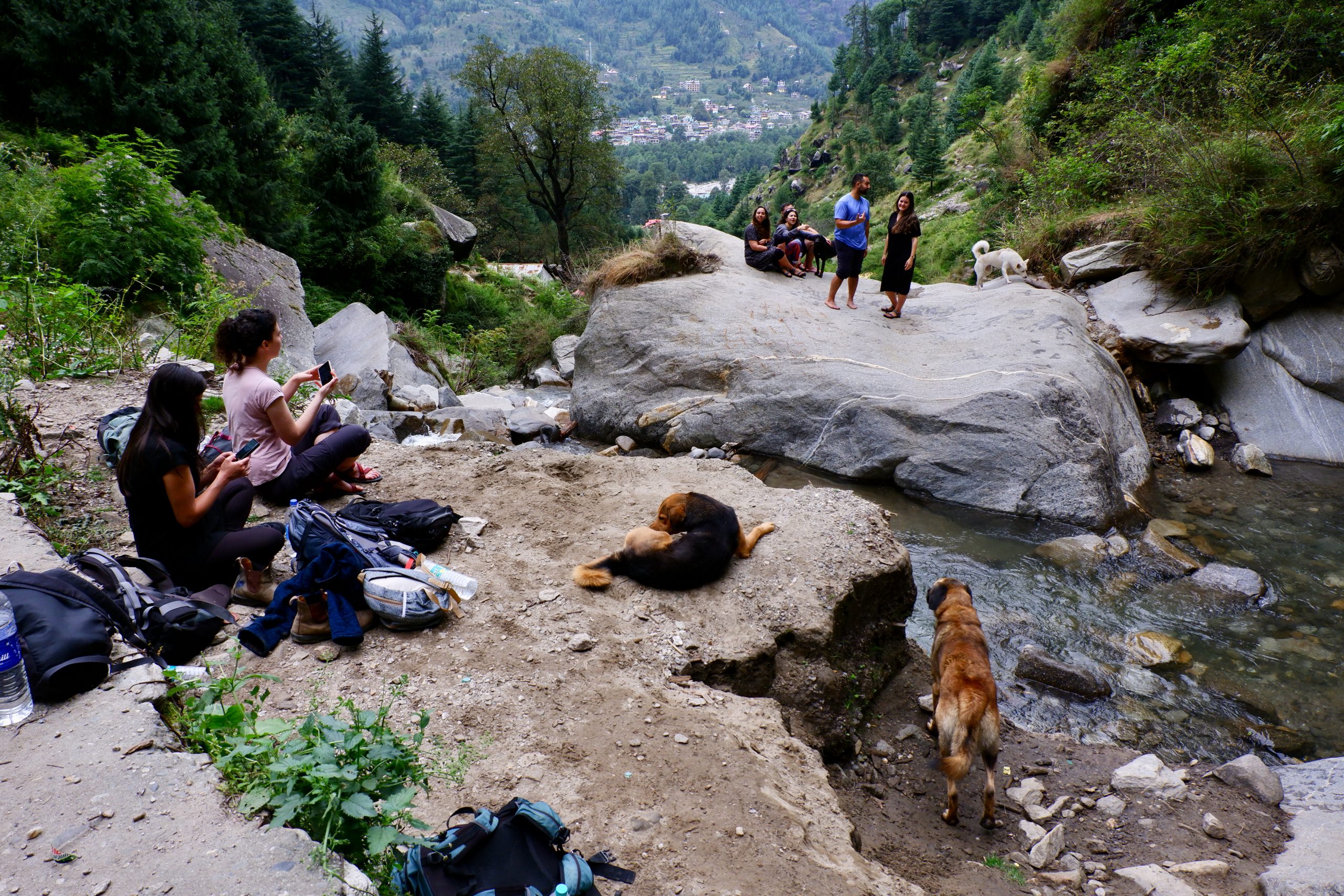 4
4
We then went to Vashisht and had a look around. This is also a mixture of normal village life and a lot of “hippie tourism” and is also not very busy at the moment. It also has pretty temples.
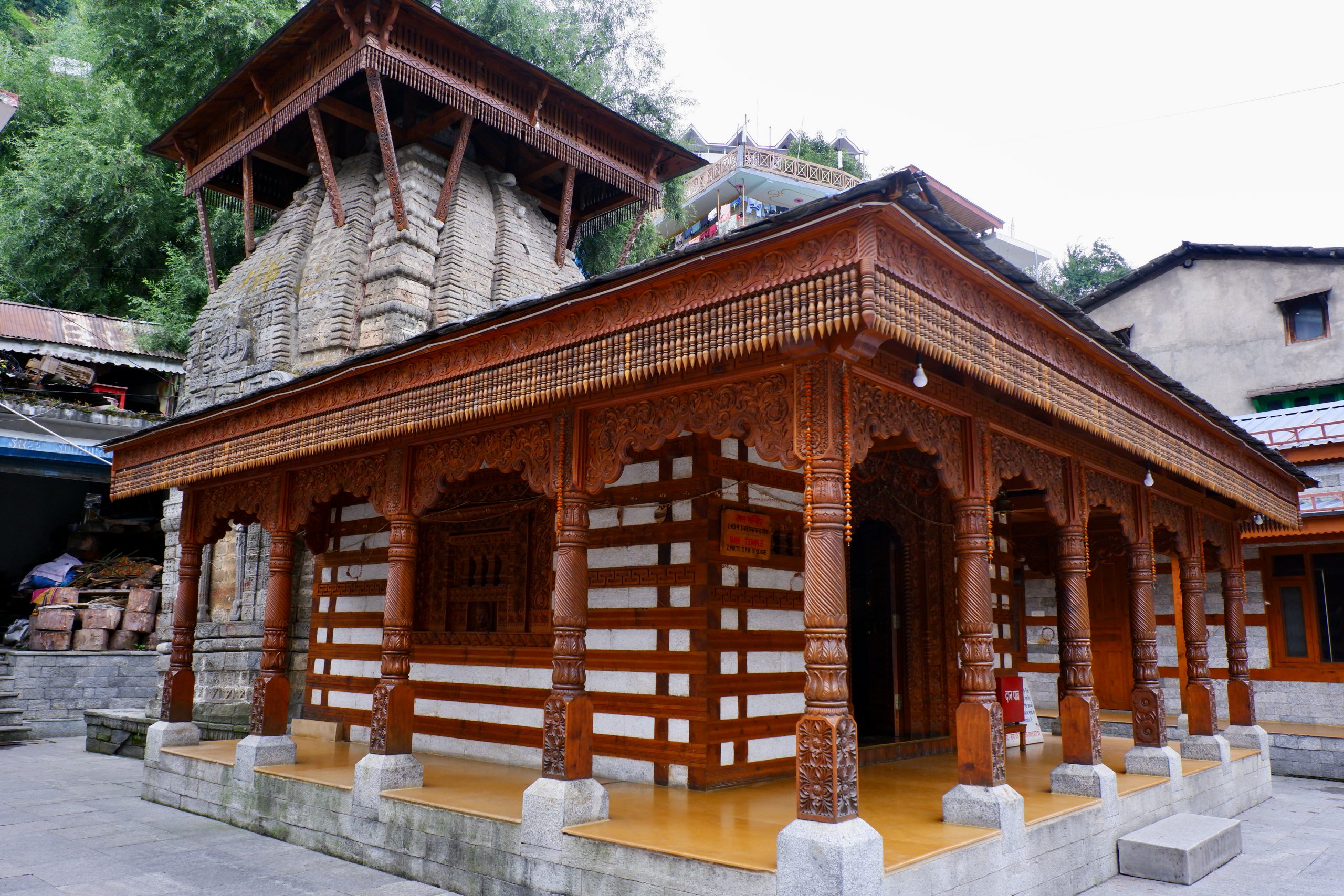 Temlel in Vashisht
Temlel in Vashisht
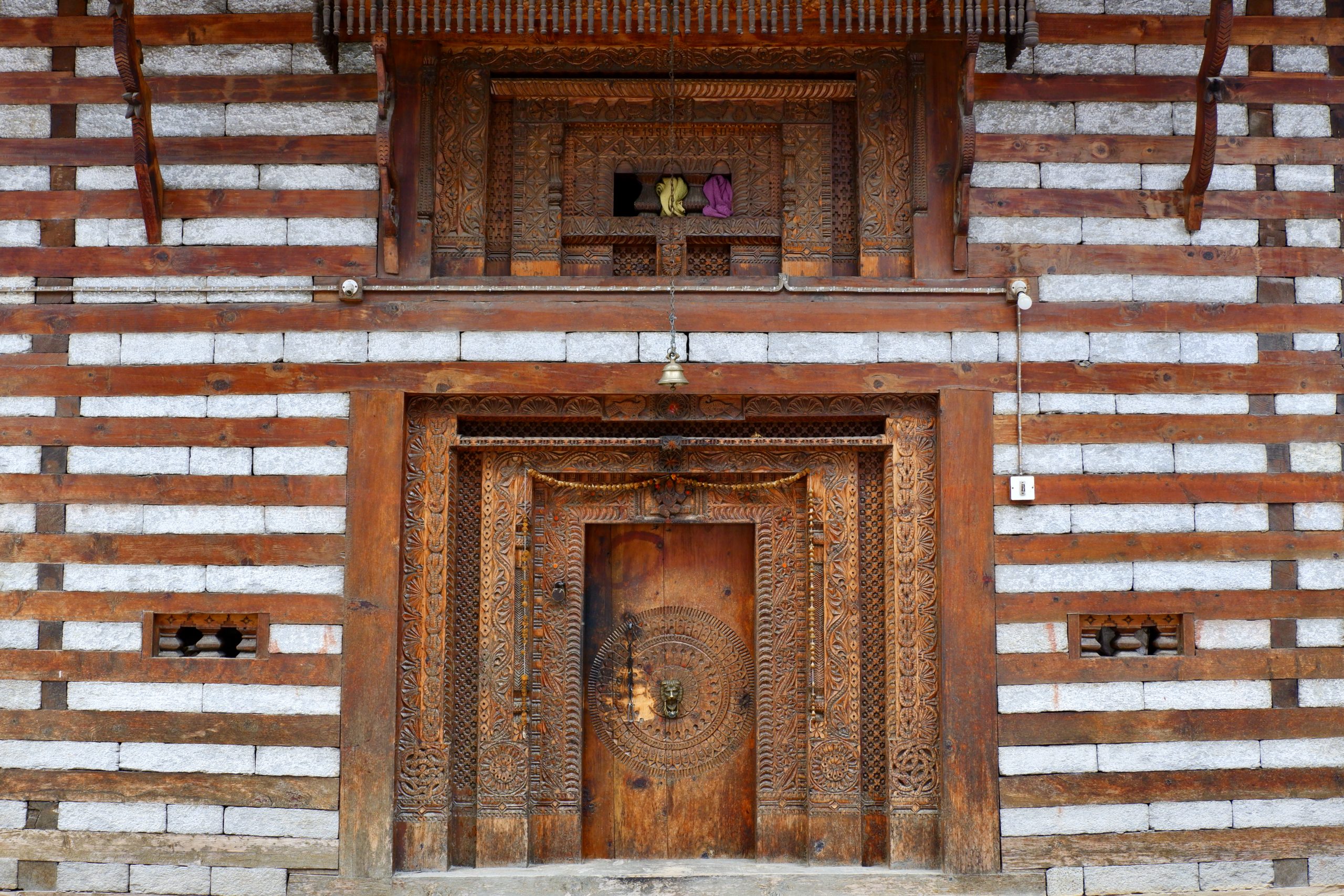 carved entrance
carved entrance
Then we walked again along the National Highway to Manali, among other places, and it was incredible that you could actually walk there, because otherwise it is far too congested with cars. I startled one young man a bit when I excitedly beamed at him and pointed at his T-shirt and asked for a photo. Great, where you meet St. Pauli everywhere!
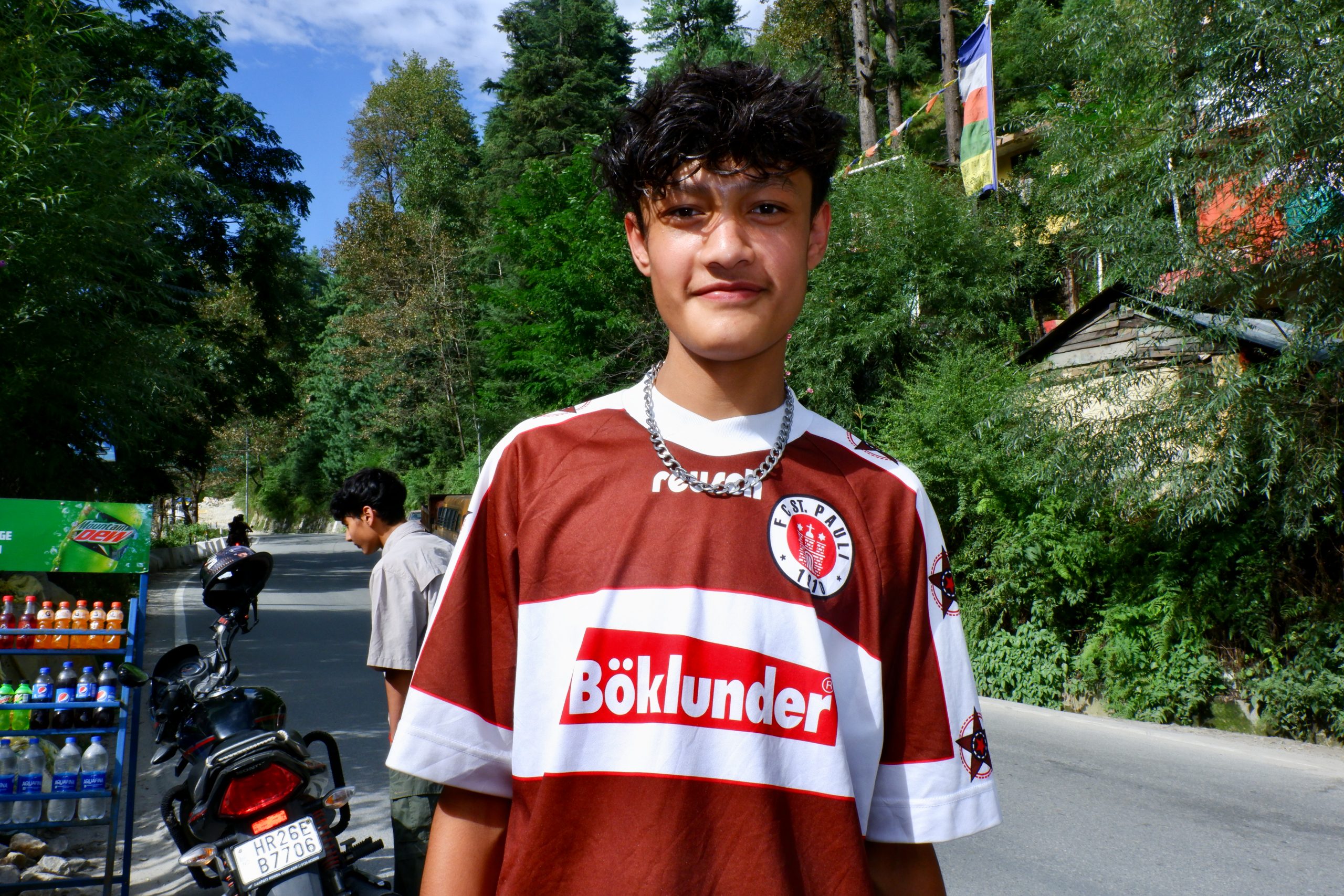 St. Pauli
St. Pauli
We also saw this ensemble and I thought it was a fitting picture of India with the rubbish, the poor people and above them a dental clinic that the gentleman had dedicated to his mother full of gratitude. (on the right: “In Loving Memory of my doting Mother, late Mrs. Kala Devi, who inspired me to serve Humanity…”)
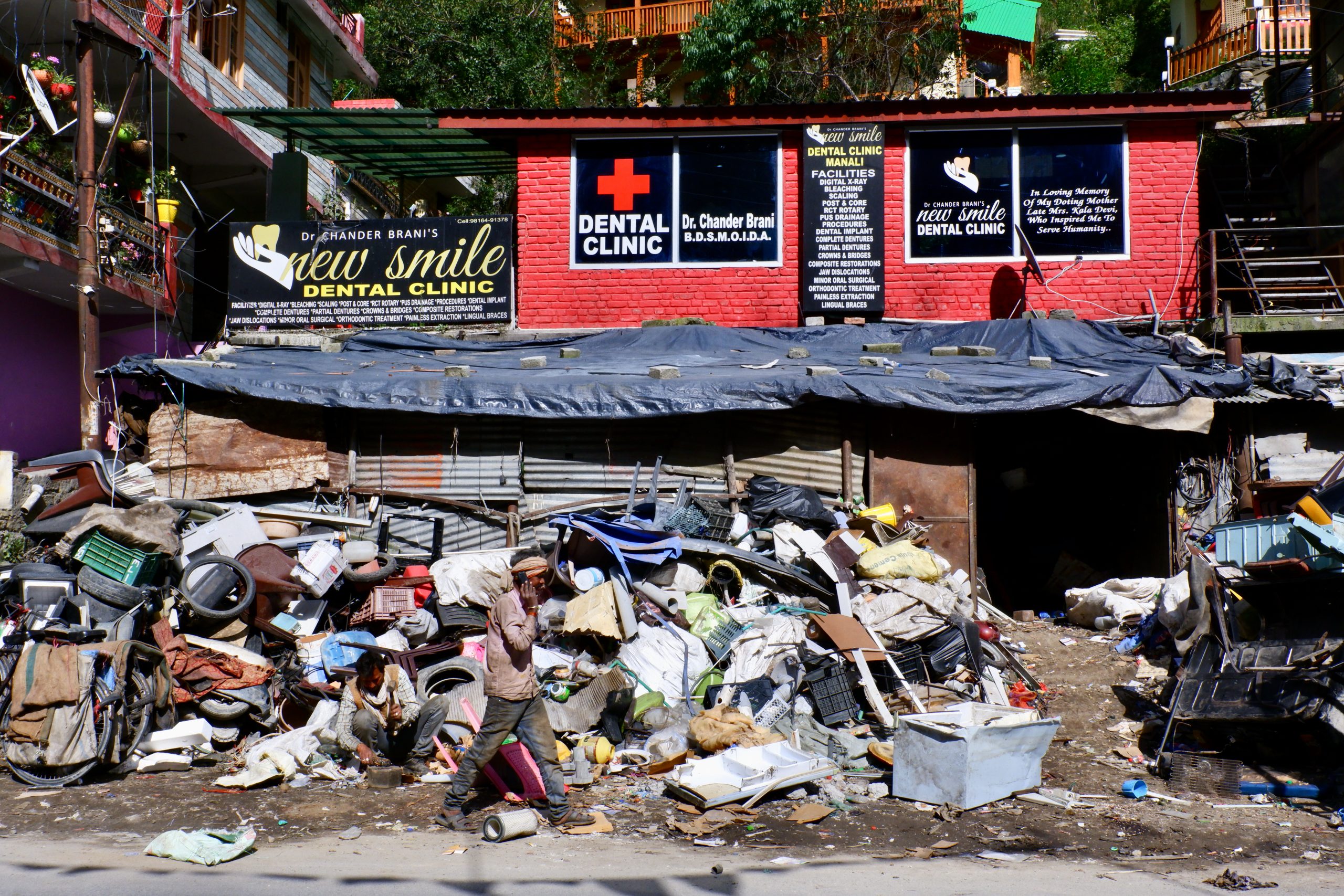 Ensemble
Ensemble
In Manali we wanted to fortify ourselves with a coffee and lassi for the ascent to our accommodation when we heard drums. A procession! We quickly ran out and took a picture. In the previous post I mentioned the deities visiting each other. Here a deity was carried from A to B – but I don’t know from where to where and why exactly. The men looked very serious and sometimes they stopped and tooted.
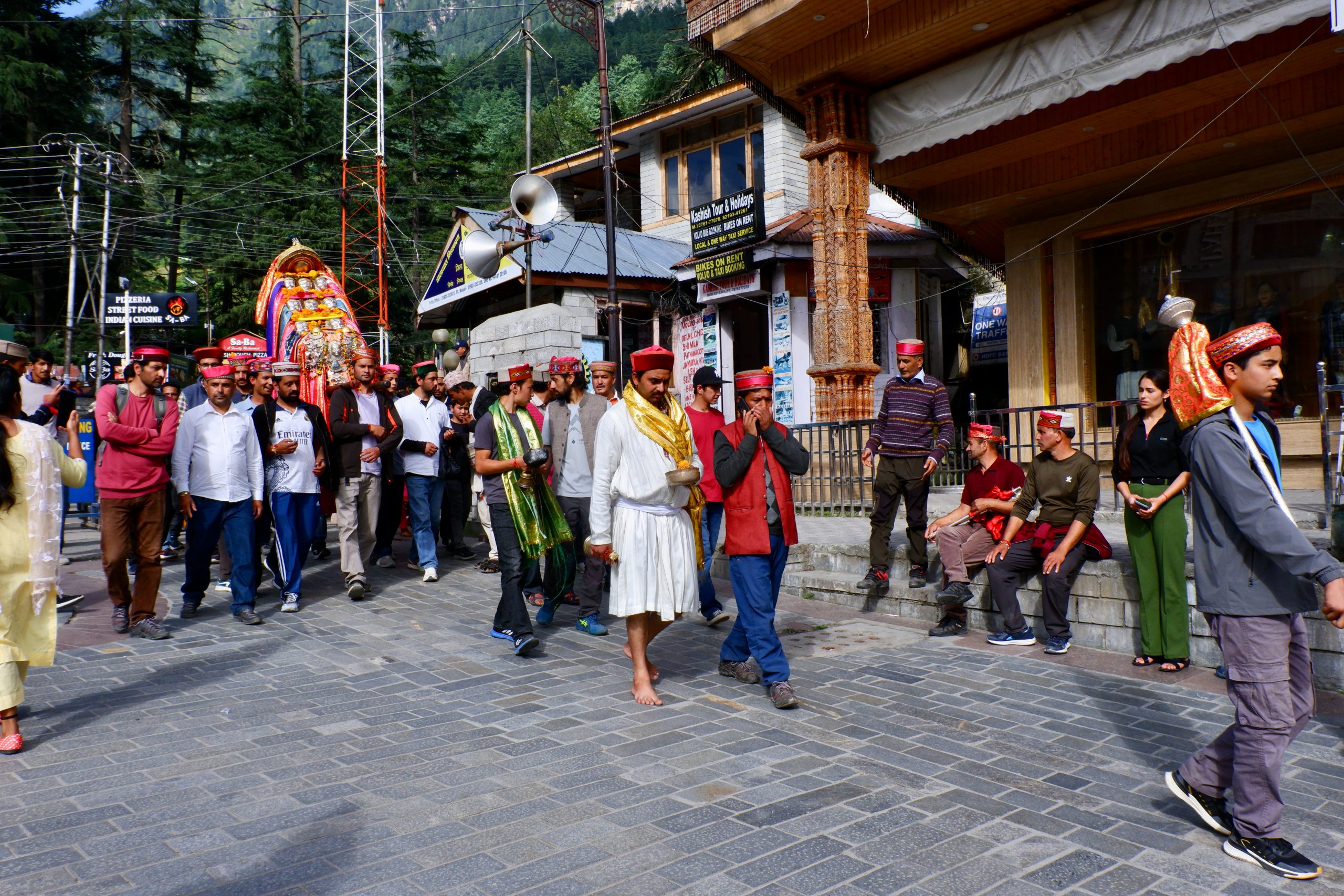 1
1
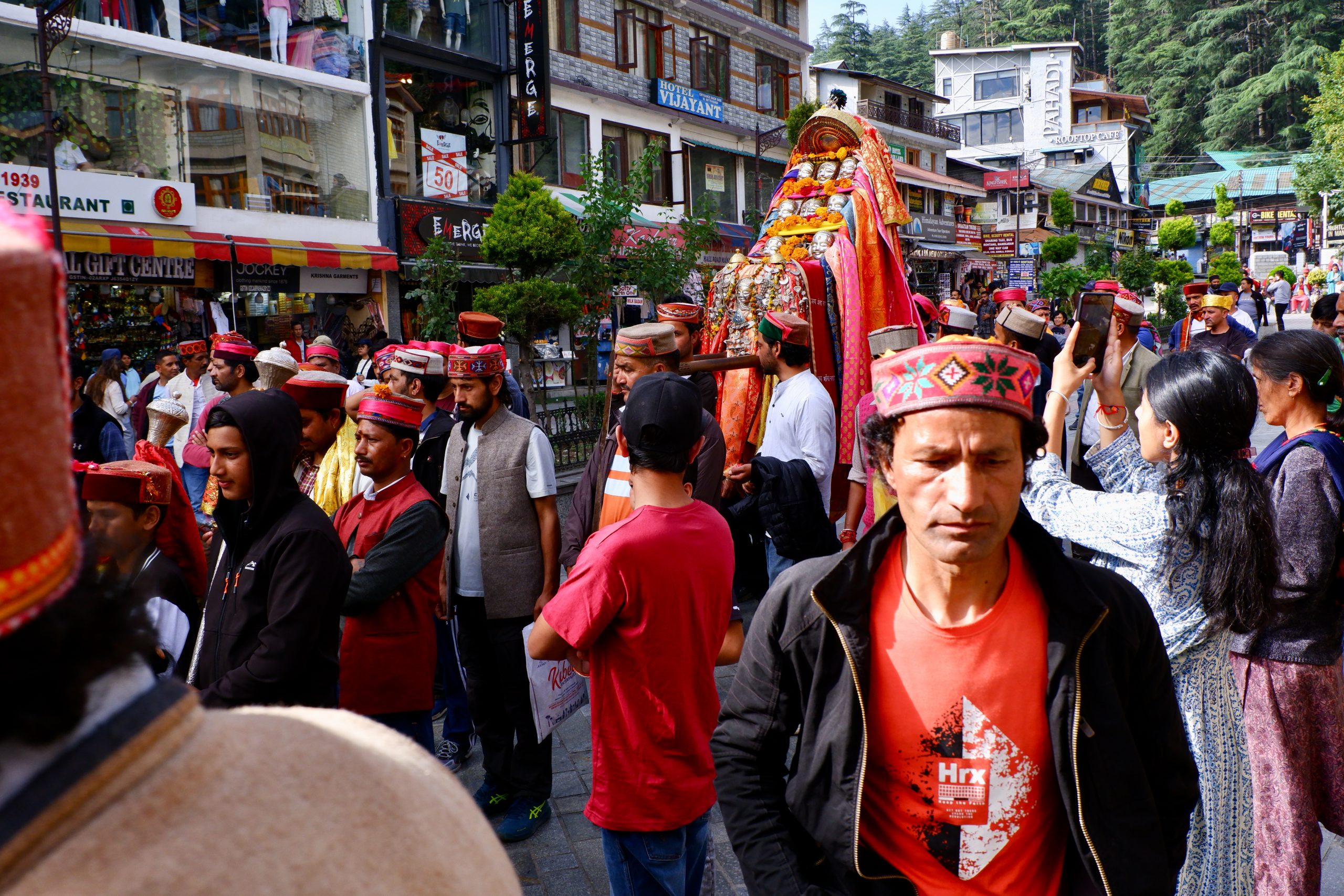 2
2
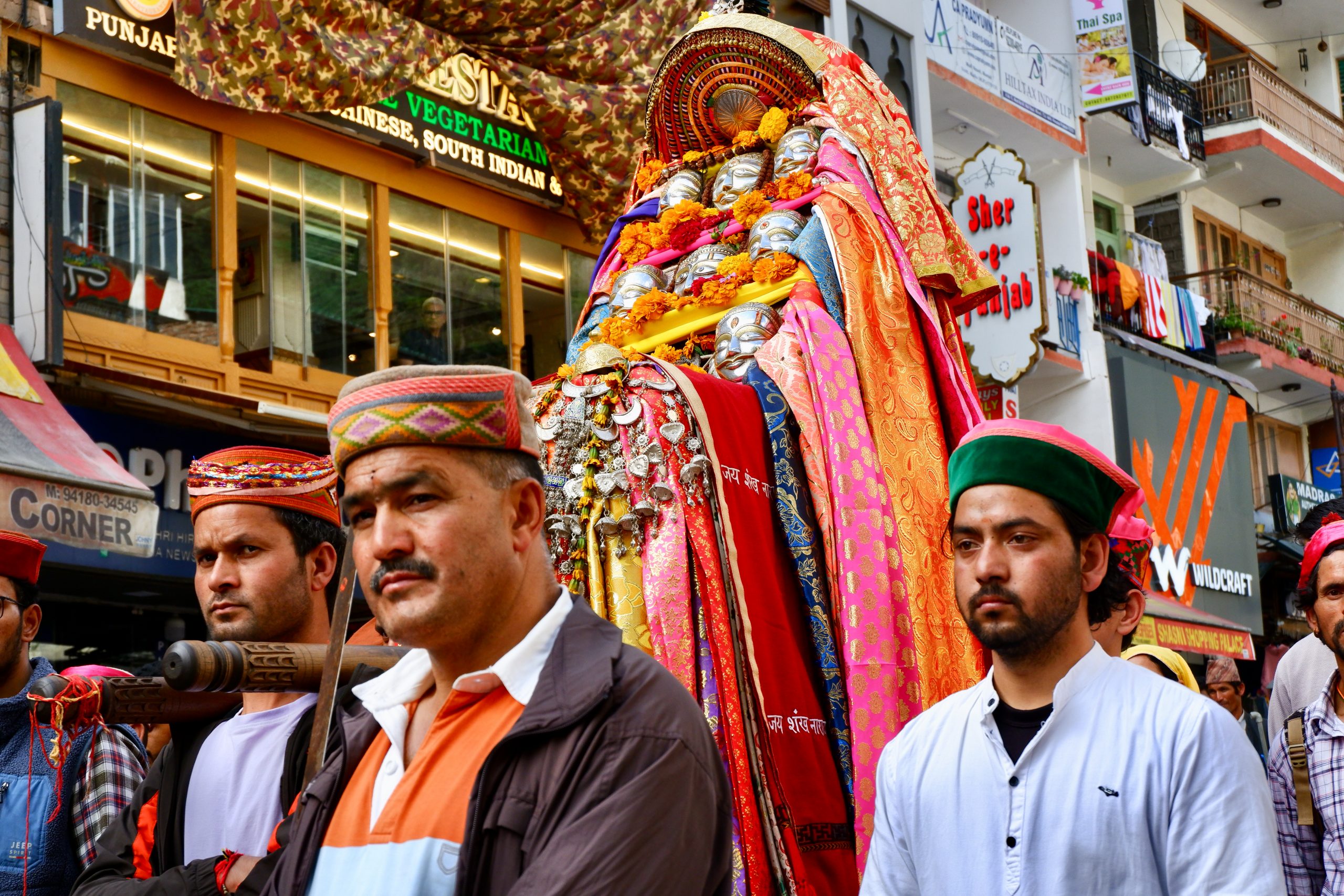 3
3
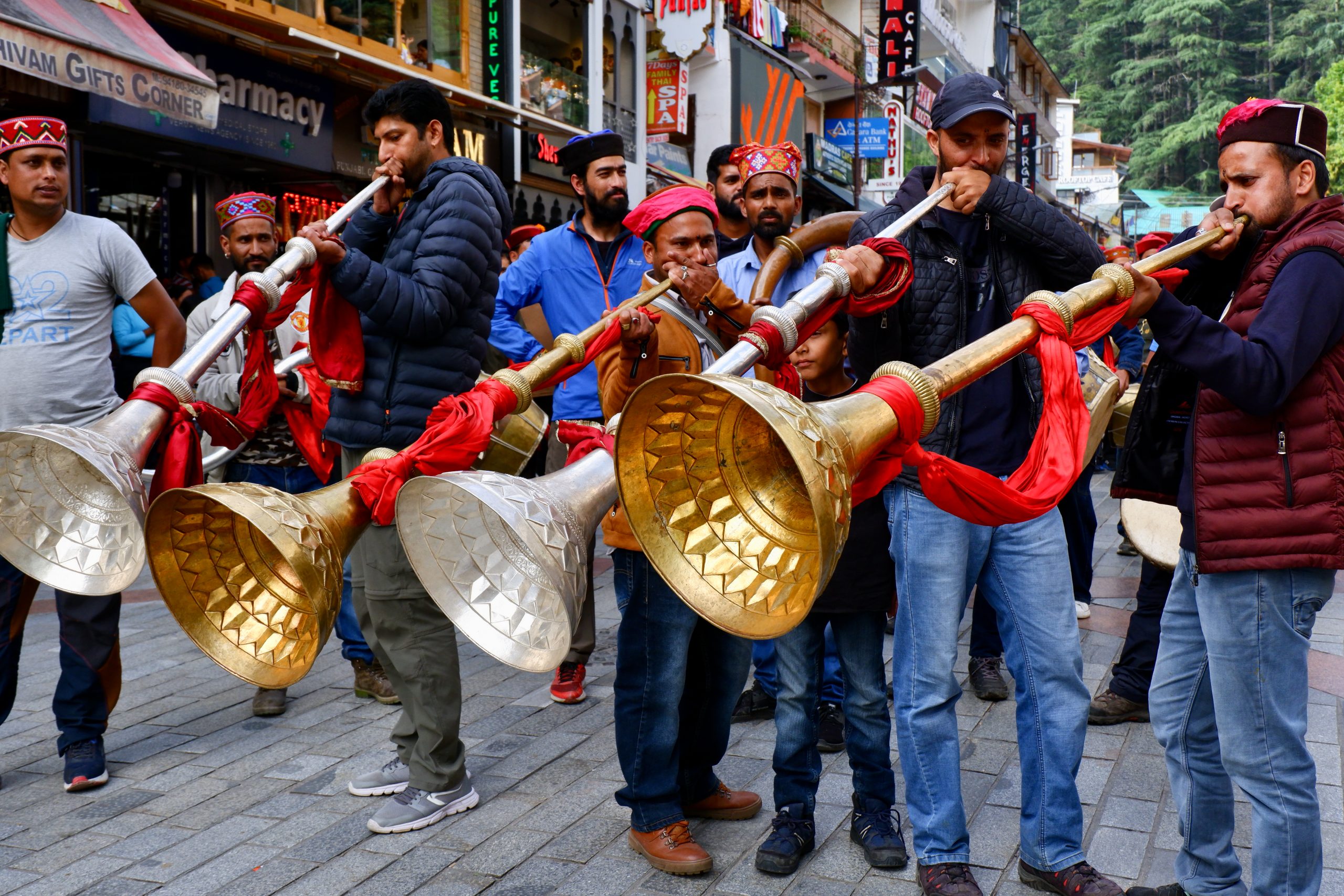 4
4
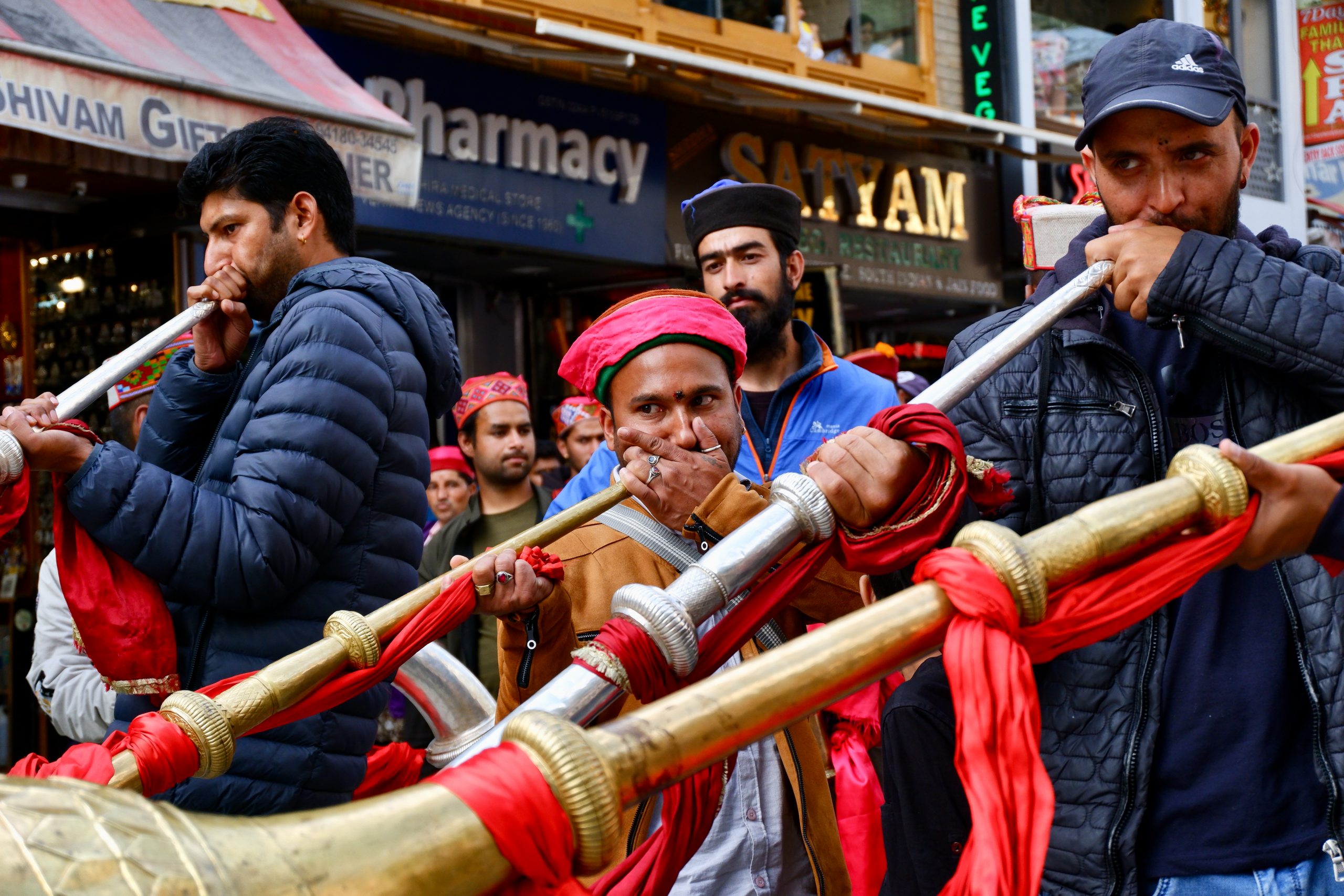 5
5
And then we still enjoyed our nice room and sniffled in the pain of parting. Eva wanted to leave for Ladakh early in the morning and I wanted to visit someone else in the area for 3 days starting in the afternoon.
